










by: Debra Roberts

As the busi agazine has been in suc visits) by over 6,000 uniqu many breeders an the past four years I look zine and website!
My husband s, including a breeder sca te, our Luna (FIP Surviv turned FOUR in Ja chance at life thanks to th

I aim to write and publish informative and entertaining content from Savannah enthusiasts and experts in a whimsical, electronic, FREE publication. I combine factual and heartwarming stories with health and safety education. Current and future owners can easily search our website using keywords to find tons of information and facts about our wonderful breed The list of knowledgeable contributors sharing stories and experiences with our readers is steadily growing, so there's no lack of fabulous content to publish!
Savannahgans® e-magazine welcomes ALL cat lovers, regardless of breed, to enjoy our content. Whether searching for safety, health, food, or DIY advice, you'll find it all in each quarterly issue and the blog at www savannahgans com It's all FREE Your support by donations, ads, and shopping through our affiliate links helps with operating expenses and is shared with the Savannah Care and Rescue Funds.
Follow us! We have Facebook, Instagram, Pinterest, YouTube, and Twitter pages!

Owner, Editor, Writer, Designer, Marketing, and Social Media:
Illustrator, Graphic Designer and Art Director:
Featured Writers:
Debra Roberts, Savannah owner, R.N., and blogger
Jacqueline Luttrelle, Savannah owner and artist
Dreia Nickerson, Savannah owner
Amanda Gerard, Savannah Breeder
Laura Lawson, Savannah owner
Gary Fulgram, Savannah breeder
Jenny Biehunko, DVM; Resident ACVB, Veterinarian and Pet Behaviorist

dia Contributors:
Featured DIY:
Featured Artist:
Featured Breeder:
On the Cover:
Jamison Roberts, Savannah owner
Heather Jackson, Savannah breeder
Mandy Townend-Kolodziej, Savannah owner
Carl Bain, Savannah owner
Peri Hughes, Savannah owner
Laura Root, Savannah owner
Maria Harrison, owner of Mynwood Cat Jackets
Patrick Kelley, breeder and owner of Fig Tree Felines



F2 Snow "Niffler" of Lanna's Savannahs, owned by Jenny Biehunko, DVM; Resident ACVB, Veterinarian, and Pet Behaviorist

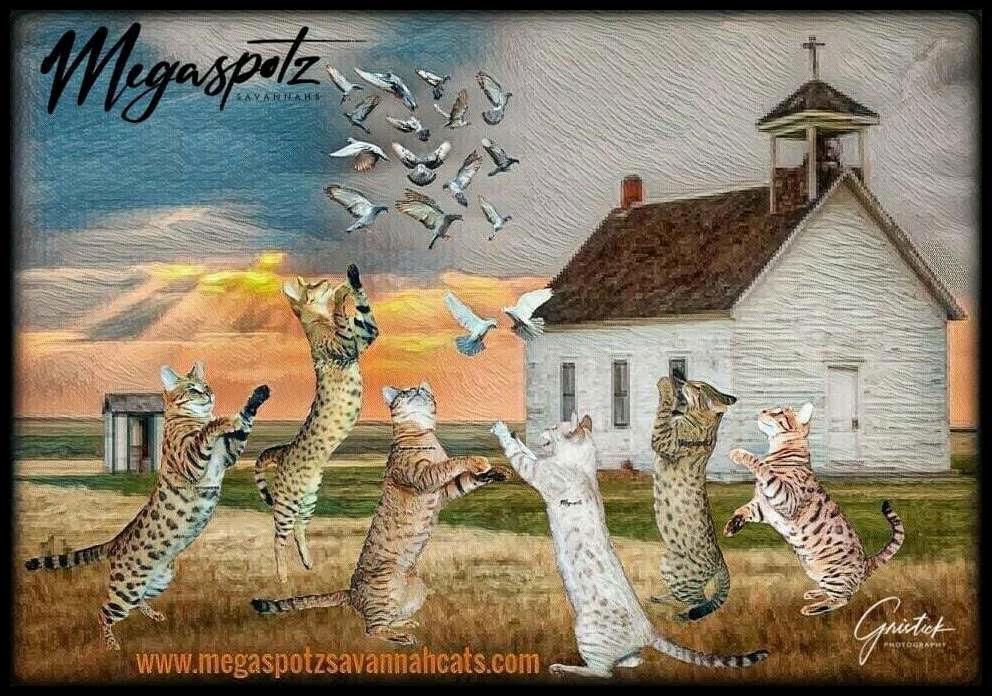




F e a t u r e d S t o r i e s

H e a l t h a n d S a f e t y
B r e e d e r S p o t l i g h t
F e a t u r e d A r t i s t
P r o d u c t R e v i e w
F e a t u r e d D I Y



Located in Washington and Nevada, we're a small in-home TICA registered breeder specializing in producing unique purebred F1A, F2B, F3C, and F4 and F5 SBT Savannah kittens with a wild majestic look of their ancestors. Our cats are bred to develop the Savannah breed standard further, emphasizing large ears, triangular faces, long bodies, and legs with a majestically bold spotted pattern Additional generations to come in future breeding.
We're expecting F1A and F4SBT litters in mid2021 and F1A, F3C, and F4SBT in fall 2021



Turloc is owned by Mandy Townend-Kolodziej Tuloc decided he needed to destroy not one but TWO bags of kitty litter! At least it was CLEAN litter! 10-year-old F1 "Tuloc the Trouble Maker" of WildStreaks Savannahs, BC, Canada.

IN A WORLD FULL OF CHAOS, GROUND YOURSELF WITH THE BEAUTIFUL THINGS GOING ON IN YOUR LIFE--LIKE SAVANNAH CATS!




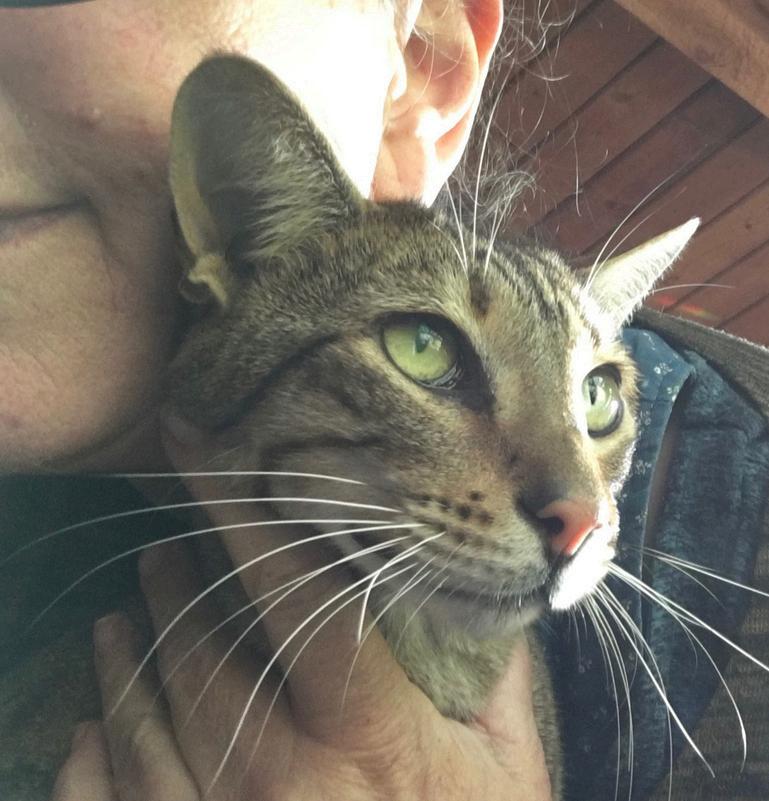
By: Dreia Nickerson of Saltspring Island, BC, Canada, with assistance from Carl Bain of Copley, Ohio

I live with two Savannahs, three 1/2-year-old F7SBT Hank, two 1/2-year-old F6 Willie Coyote. In his first year with Han he was only a kitten. He spent much time with me in the ya on a leash, which led to him desperately wanting to be out there at least six hours a day He also had an enclosure, bu seeing his familiar, beloved yard just out of reach constantly reminded him of where he would rather be He wasn't happy, so I began researching alternatives that might allow them to be out there
There are several types of professionally manufactured cat fencing However, considering the size of the area I wanted to fence, a ready-made kit would be beyond my budget And I was curious if the heavy plastic netting would be tough enough to withstand a determined raccoon. There are also do-it-yourself alternatives that are less expensive. The general design recommendation is a fence between 6' and 8' high, with brackets to support a 28" inward-angled overhang of flexible but rigid plastic netting. The mesh should be no larger than 1 cm, as anything a paw can get through can twist and result in serious injury As many deciduous trees surround my yard, keeping a net overhang free of debris could be challenging There are a few reports of unusually agile cats that manage to get past this type of overhang, so I wanted something more durable and secure for my Savannahs
In my search for a solution, a fence built by Carl Bain inspired me Carl lives with four Savannahs Camille and Cody are female and male F3s, Casey, a big F2B male, and Aspen, a silver F2 male. In 2013, Carl decided he wanted to find a way to allow them to play in an enclosed section of his yard, so he got a contractor to build him a sturdy 8-foot high wood fence frame, to which he added heavy galvanized wire fencing with 2 X4 inch mesh. His initial enclosure was approximately 26 x 26 feet.

On top, Carl built a 2-foot 45-degree angled overhang, but Cody learned how to escape over the fence within a few days His veterinarian suggested installing a small animalcontrol the electric fence along the top This system worked for seven years with no escapes
Carl's since enlarged the enclosure to be approximately 86' x 55" x 26' and removed the overhang entirely




Carl set this up using three low-powered pulsating type electric fence wires held six inches out from the galvanized fencing with plastic insulators. One charged wire goes around the inner perimeter of the fence about seven feet up, and the other goes along the top. The third hot wire goes around the outer periphery of his fence, about seven feet up. The wire's charge is a low-powered, .05 joule, 2-mile electric fence charger The metal fencing is in contact with the ground, which is necessary for the charged wires to work Carl also keeps a five-mile charger and an electric fence tester to ensure everything works
I built a fence using a mix of 8- and 10-foot metal T-bar fence posts ** with 5-foot long ⅜ inch rebar sections The rebar is bent at the midpoint and bound with wire to the top of the metal posts, creating sufficient support for the doubled-up 4foot-wide rolls of two-inch mesh, 16-gauge galvanized wire fencing, and about 20" of the inwardly angled lip. In my situation, the lip is mainly to create a place for a second charged wire at the top of the fence edge, which can be easily kept clear of the abundant blackberries on the other side. My fence is 6 1⁄2 feet high, begins to angle inward but continues upward, and the edge of the overhang is about 7 1⁄2 feet off the ground **(the building supply place didn't have all the 8foot T-bars I needed, so I had to use 10 foot)


I decided to modify Carl's fence to fit my yard, which includes a small orchard, pond, access to my woodshed and garden, and some wild areas along the sides This would require about 450 feet of fencing, plus the front of my house and woodshed. As my budget was limited, inexpensive and durable were more of a priority than pretty.


I've never seen my Savannahs jump with their front paws more than 5-6 feet off the ground. However, more agile Savannahs may require a higher fence.
The fence is securely attached to logs or salvaged lumber along the lower edge The outer perimeter is reinforced with large rocks to discourage anything burrowing in
I have a sizable multi-stemmed maple tree in my yard that's about 60 feet tall I wrapped the trunk in metal sheeting, which was then topped by netting, as I want to avoid my Savannahs climbing tall trees, which Hank aspires to

I also built a small 8' x 5' enclosed, roofed, double-gated entryway in front of my main gate to provide space to bring in a wheelbarrow, guests, or my bicycle without the worry of cats slipping out.
Along the inner perimeter, about 4 feet up, a 16-gauge galvanized wire connects to a very low-powered, lowimpedance, pulsating, 07 joule electric fence charger
Plastic insulators attached to the T-bar fence posts hold the charged wires about six inches from the fencing. Because my fence doesn't have a wood frame's stability, I installed additional insulators to ensure the charged wire stays at the correct 6-inch distance from the fencing. I'm adding charged wire along the edge of the overhang, but this is to keep raccoons out when the walnuts ripen As far as I've seen, my Savannahs have never tried to climb the fence But the lowpower electric fence is an added reinforcement
I've encountered some people who disagree with using even low-powered electric fencing to keep cats contained However, this is a visible boundary Cats quickly learn to avoid it, and the situation isn't much different from cats learning not to try catching bees
My Savannahs have had daytime indoor /outdoor access to the yard for almost a year, and there have not been any escapes. They always seem happy to come in at supper time and ready to sleep through the night. However, like most things, this system's not entirely risk-free!
I have yet to discuss all the details of safely setting up an electric fence in this article. If you need more clarification on what you're doing, please seek advice from someone qualified to install electric fences!
The charger must be very low-powered and the type that pulsates The stronger continuous charged type electric fence wires can be harmful


Your local fire department may require the electric fence to be off in dry areas at certain times of the year. It gets very dry here in the summer, and our local fire department didn't think such a low-powered pulsing electric fence would be a hazard, but regulations may vary.
Always check with local regulators to make sure you can comply with local safety requirements!

Cats who go outside or have opportunities to catch mice need regular flea and tick prevention and internal parasite control prescribed by a veterinarian It's also essential to ensure no neighbors are putting out rodent poison, as poisoned mice can be lethal if eaten by a cat
A cat with a heart condition could be harmed by a lowpowered electric fence wire or become injured by becoming tangled in an inadequately supported fence.
Different areas have different environmental hazards, so always consult with a local vet to ensure no poisoned plants, snakes, lizards, or birds of prey are likely to cause adult cats' problems in the daytime Cats or kittens under six pounds can be vulnerable to birds of prey in most areas and shouldn't be outside without protective roofing
Before releasing them, I spent about a month in the yard with Willie and Hank, wearing bright-colored walking jackets attached to leashes I followed them, closely supervising them and the dragging leashes to see if they'd go over the fence or find some other mischief! When I could trust them to stay put, I made them wear trackers for the first couple of months in case the fence didn't work.
I work from home and am always here to monitor things. However, I'd not be comfortable leaving my cats out if I was away for more than a quick walk down the road.
Carl also provided the valuable tip that cats should always be brought in an hour before dusk, as otherwise, they become challenging to round up.
The general concept easily adapts to various situations and lifestyles The cat-proof fence is working well for us, and my Savannahs seem much happier and healthier, especially Hank, who was desperate to be in the yard! He's become a lot more relaxed, playful, and affectionate Willie was happy enough with just the enclosures and was getting tubby and trimmed down Everything flows much better now that they can hang out in the orchard and freely participate in my indoor/outdoor lifestyle.






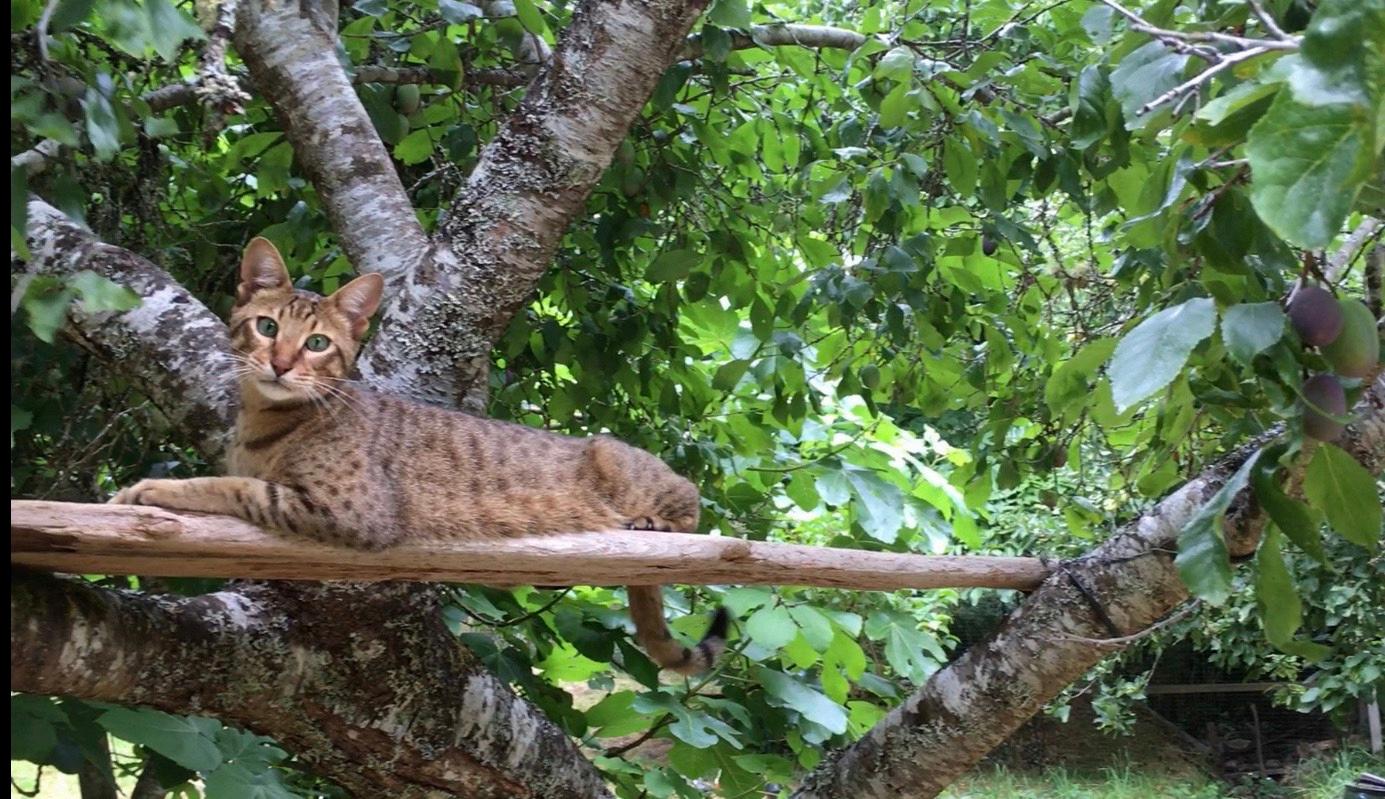


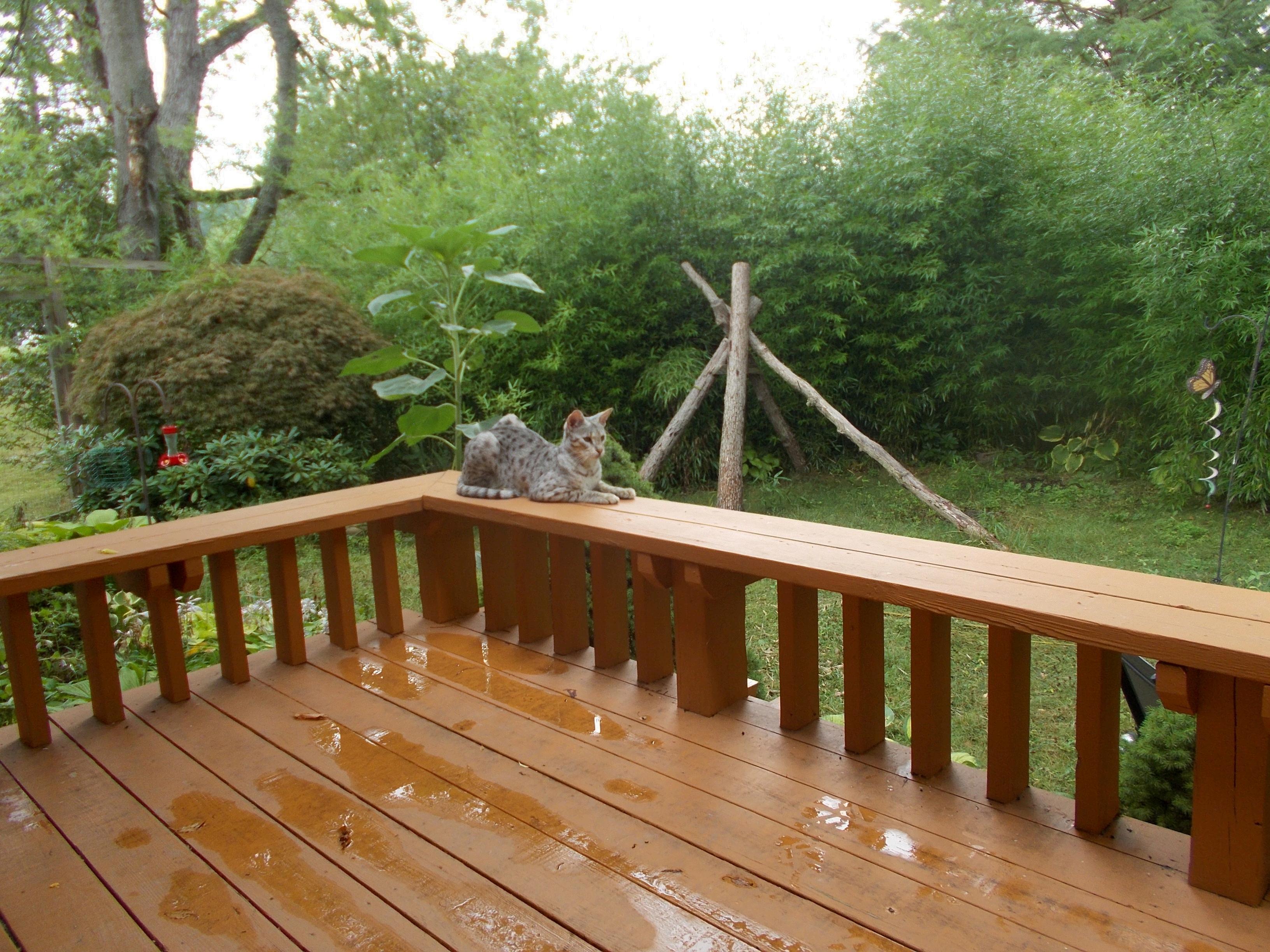


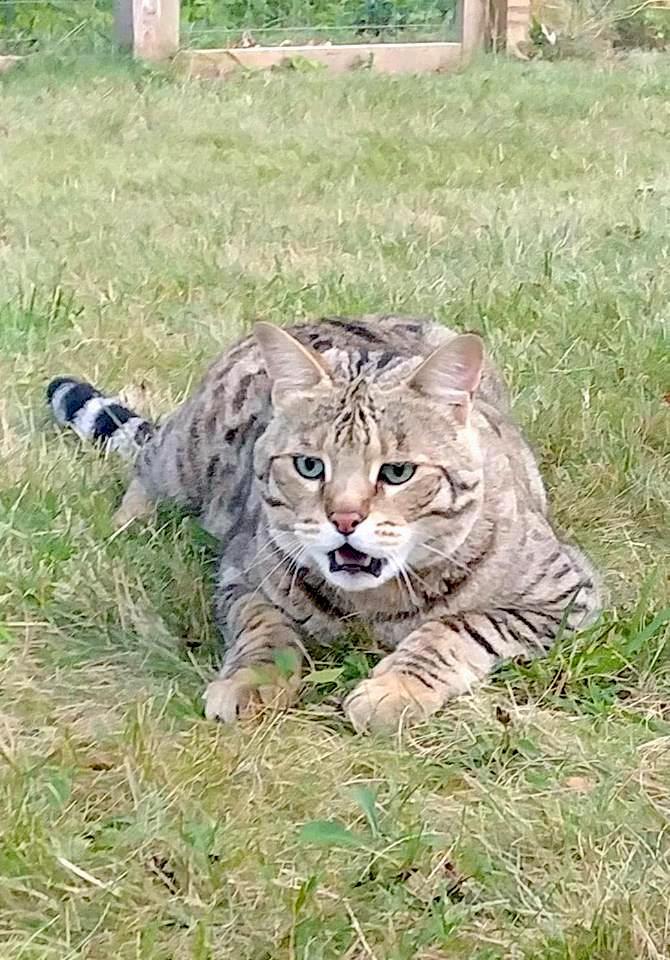





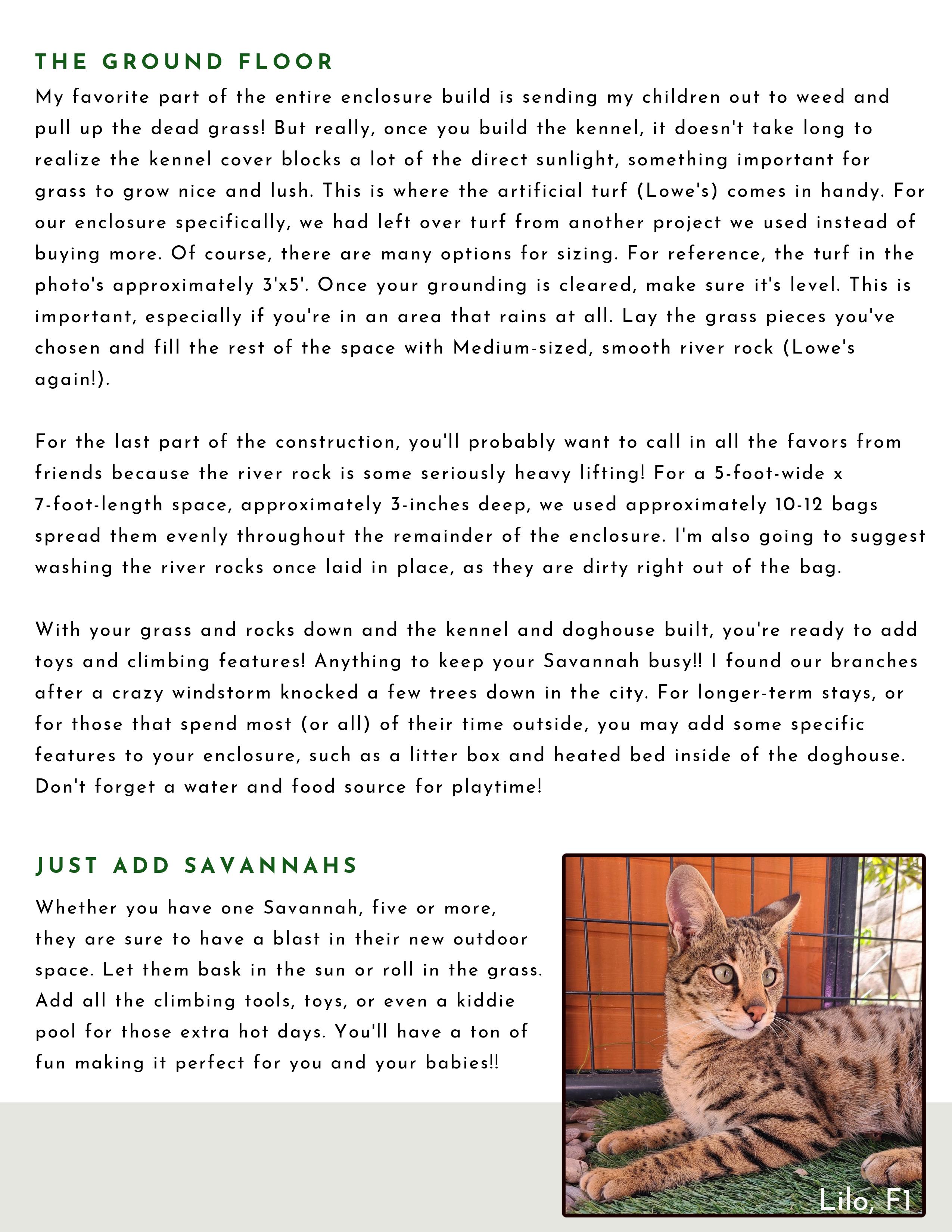



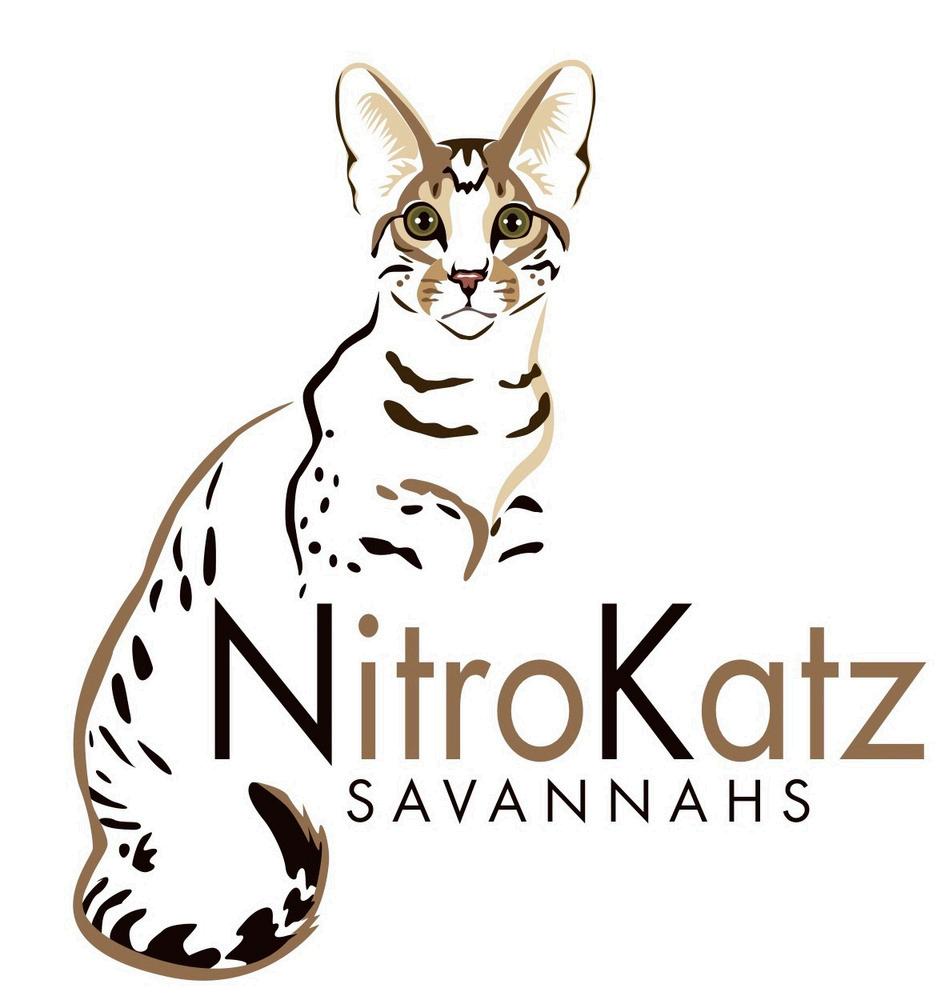

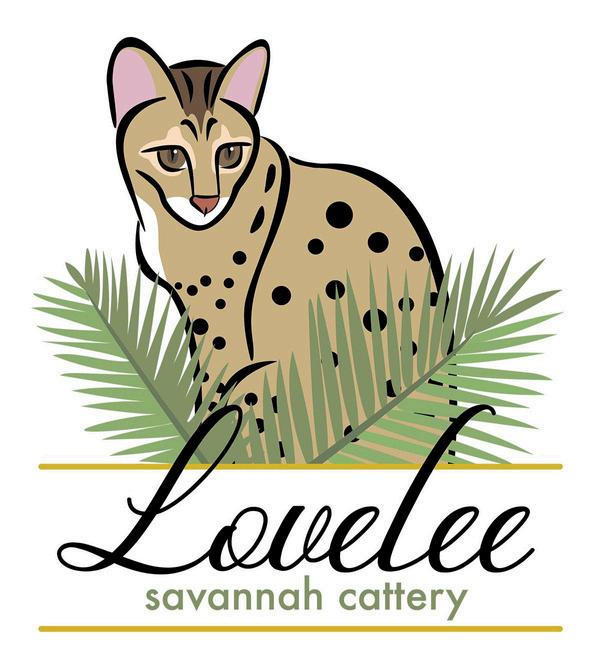




Written by: Laura Lawson Kobi's Owner

On January 21, 2021, it was 47 degrees here in the Kansas City, MO, area.
I was at work, and my husband was at home My husband entered the house from the garage, leaving the door open, as he often does. Kobi, our two-year-old F1 Savannah, ran out the door into the backyard. My husband followed him and ran back into the garage to get back in the house. But the entrance to the house was now closed. Kobi ran back out of the garage, and the pursuit continued. My husband followed him across our backyard into the neighbor's yard, and Kobi ran in front of the neighbor's house When my husband reached the neighbor's front yard, he'd lost sight of Kobi
We live in a rural area with 1,000 acres of woods surrounding us, including four acres of woods on our property.
During my break, I called my husband that day, which I never do, to give him some news we'd been waiting for, and he sounded out of breath I asked what was going on, and he told me Kobi had gotten outside, and he couldn't find him My panic set in! He told me he'd walked 9 miles calling him and using his favorite toy to get him to come out from wherever he was hiding I immediately said I needed to leave to find my baby I got home at about 3:45 and searched for Kobi until dark (about 5:30 pm) I went to bed, heartbroken with the knowledge he was out there terrified, having never before been outside. Kobi's microchipped and wasn't wearing a collar. That night, I posted on every social media site I could think of and registered him with every lost pet registry. We left the garage door open enough for him to get in and put clothes that smelled like home on all sides of the house.

January 22, 2021 - I printed Paw Boost fliers and took them to my three neighbors on our street and three neighbors down another street We also set traps with his favorite food (shrimp) and covered the traps with familiar blankets from inside the house I also threw a tshirt I'd worn all day on the front porch NO KOBI
January 23, 2021 - I enlisted a friend with a thermal imaging camera to help look in the woods, around the neighbor's houses, and under everything imaginable There were no sightings. We did have over 1,000 shares on social media, but still NO KOBI. It was approximately 50 hours of him missing, and I'm heartbroken.
January 24, 2021 – NO KOBI
January 25, 2021 – 87 hours missing, and temperatures are dropping into the teens in the Kansas City area People suggested someone may have taken Kobi in, but I know better because he'd NEVER come to anyone Strangers raised money for a reward and also set traps in their yards The love for this boy and the help was overwhelming It started raining, and everything I'd put outside with our scent got wet I feared we'd lose the smell I contacted a pet detective/trapper, paid a consultation fee, and discussed bringing her dogs if necessary. She assured us an indoor-only cat wouldn't typically go more than 1500 feet from their home. She suggested spraying the trees with nasty mackerel juice for four houses in all directions leading to our home. I made big bright posters to keep the fact that he's missing fresh in everyone's minds. We also put up trail cameras to notify our phones of movement near the traps



January 26, 2021 – Still nothing There are no sightings and no notifications from the cameras.
January 27, 2021 – There are no sightings or notifications from the cameras.
January 28, 2021 – We had no notifications from the cameras. The phone went off at 2:30 am, causing us to jump out of bed quickly to check, but the cameras weren't there I was a total disaster and a crying mess at this point I couldn't focus on life I just wanted my baby home At about 12:30 pm, we received a phone call from the neighbor who lives two houses over, saying she'd spotted Kobi on her deck! Once again, I was at the office and told them I was going home We were talking in the neighbor's front yard when their son said Kobi was lying on the back porch inside a wagon We went to the back of the house, and there he was! MY BOY!
I talked to him briefly as I had his toy and some fish, hoping he'd come to me. He had a blank look in his eyes as if in shock. I heard this is "survival mode," as an indoor-only kitty who gets outside doesn't recognize anyone or anything as they don't recognize their surroundings. They're trying to survive in an environment they've never seen Kobi and I have an incredible bond, and I felt so heartbroken when he didn't seem to recognize me I didn't want to grab at him for fear he'd bolt I talked to him for a bit, and then he went to the front of the house and disappeared again Once again, I still didn't have my boy! The neighbors agreed to let us move our traps and cameras to their homes, so we did that night
January 29, 2021 We'd heard nothing from the neighbors about seeing Kobi again I wanted to camp out there since I knew where he was hiding. Around 9:30 p.m. that evening, the phone alerted me to movement. The picture I received was of Kobi halfway in the trap. The following image I received was of the trap door closed. I called the neighbors and had them check, and sure enough, my boy was in the trap! I was so excited and in tears.
We picked Kobi up and brought him home Within 30 seconds of entering the house and exiting the trap, he was headbutting and purring!
A big thanks to Lisa from The Feline Finders in Little Rock, AR She was amazing!
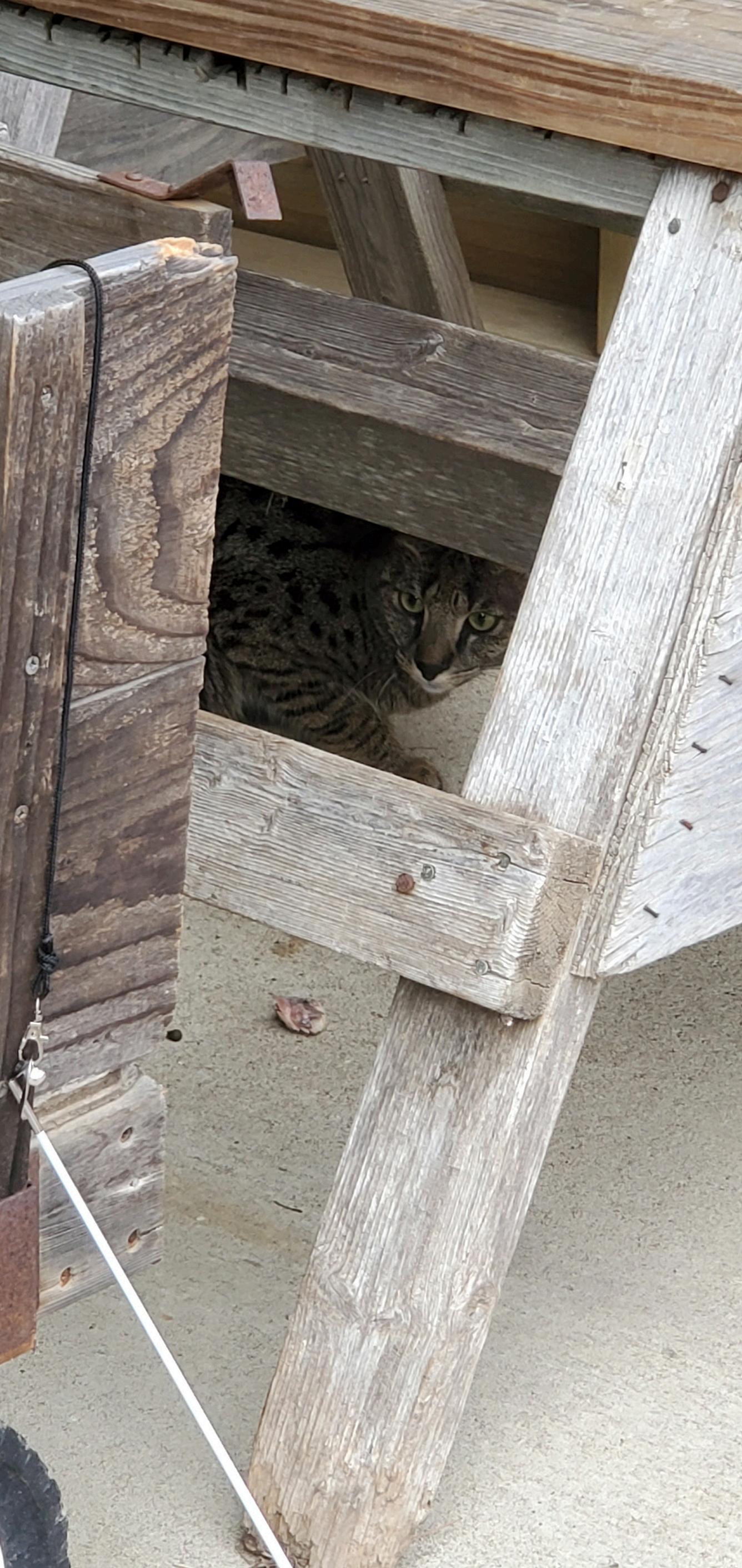






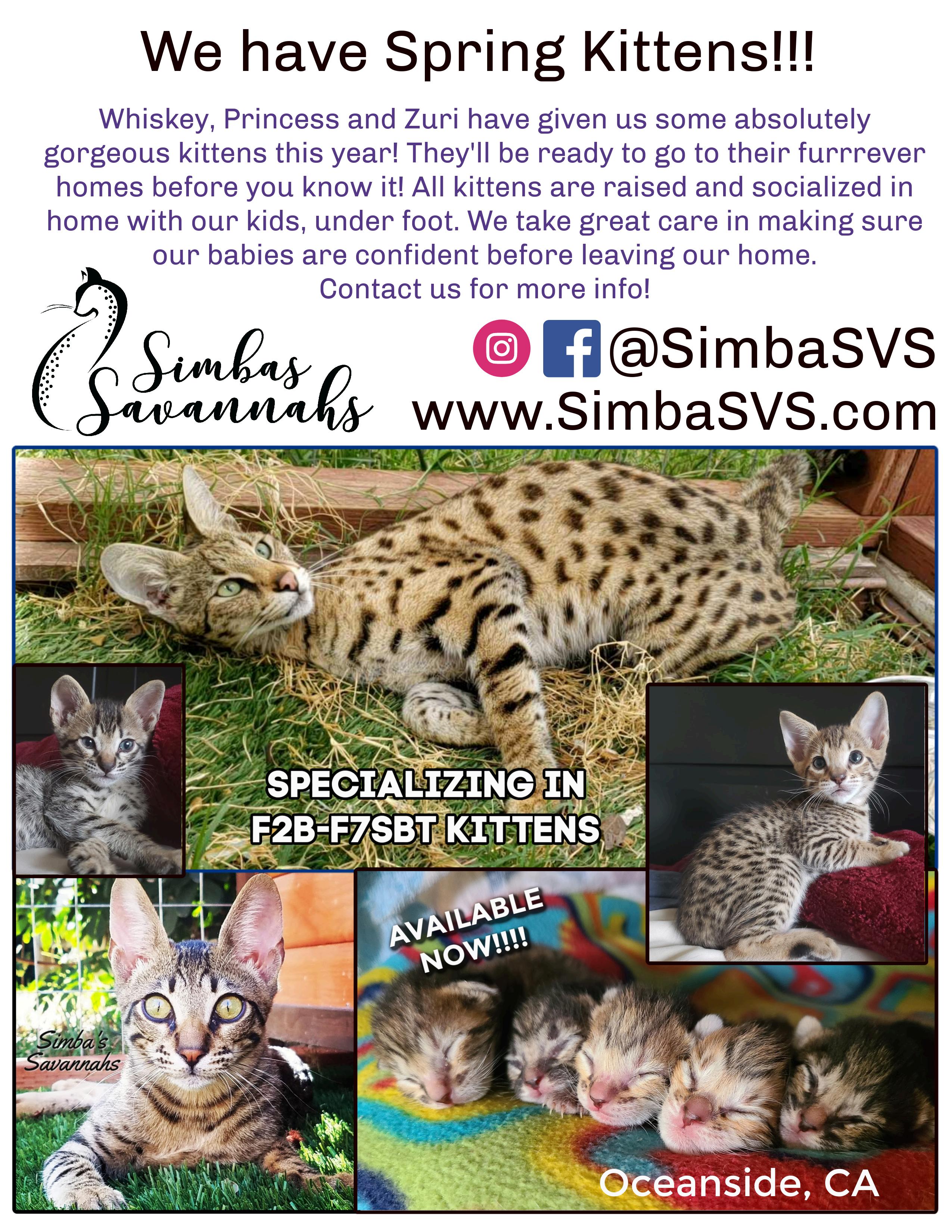

The word "Pyometra" derives from the Latin "Pyo," meaning pus, and "metra," meaning uterus. Feline Pyometra is an abscessed, pus-filled, infected uterus. Toxins and bacteria leak across the uterine walls and into the bloodstream, causing lifethreatening toxic effects Without treatment, death is inevitable
Pyometra is a serious issue and can be a life-threatening condition that requires quick and aggressive treatment. Feline Pyometra happens from many different things, with E. coli and Staph infections being the leading causes. Pyometra is a secondary infection due to hormonal changes in an un-spayed cat's reproductive tract. Following a "heat" cycle (feline estrus), the progesterone levels can remain elevated for several weeks With each heat cycle, the uterine lining engorges in preparation for pregnancy Hormonal changes can activate infection during this time With each estrus cycle, the possibility of a cyst can form If the cyst does form, it becomes fluid-filled Eventually, some tissue engorgement becomes excessive or persistent (a condition called "cystic endometrial hyperplasia") This lush glandular tissue is ripe for infection
The uterine cyst will start secreting fluids These fluids create an ideal environment for bacteria to habituate and grow. Another side effect of the high progesterone levels is preventing the uterine walls from contracting and expelling the fluids and bacteria. During estrus, the cervix opens, and bacteria are allowed to enter. Bacteria ascend from the vagina, and the uterus becomes infected, getting trapped as the cervix closes and is ultimately pus-filled. The warm and wet environment is perfect for the growth of the bacteria E-coli and streptococcus are part of the normal bacteria in the vagina and are a frequent cause of bacterial Pyometra
Another factor that contributes to Pyometra is white blood cells (WBC) While WBCs naturally fight bacteria, during
By: Gary Fulgham 25-year Savannah breeder


Estrus, WBCs cannot enter the uterus. This regular occurrence allows the male's sperm to enter the female's productive tract without harm or death from the WBCs. It's this combination that leads to the development of Pyometra
Unfortunately, there aren't always symptoms, but fortunately, Pyometra is not nearly as common as one might think Classically, the patient is a younger female cat Usually, a cat has just finished a heat cycle in the previous 1-2 months She may develop a poor appetite and vomit or drink an excessive amount of water
In the more usual "open Pyometra," the cervix is open, and the purulent uterine contents can drip out; thus, a smelly vaginal discharge is usually apparent. A female with open Pyometra is much easier to treat because the cervix is already open. There's also a form of feline Pyometra called a "closed Pyometra," meaning the cervix is closed. There's no vaginal discharge in these cases, and the clinical presentation is more difficult to diagnose These cats also tend to be sicker than those with open Pyometra due to the retention of toxic uterine contents Lab work shows a pattern typical of a widespread infection, often helpful in narrowing down the diagnosis Radiographs may show a gigantic, distended uterus--though sometimes this isn't obvious, and an ultrasound is needed to confirm the diagnosis

Pyometra can be caused by a secondary systemic bacterial infection, post-copulation, cystic endometrial hyperplasia, estrogen (to treat vaginitis), post-partum metritis, or spontaneously.
Antibiotics alone WILL NOT cure Pyometra Treatment or spaying is the only two treatments In the late 1980s, another treatment protocol became available that might spare a valuable animal's reproductive capacity Here, particular hormones called "prostaglandins" are given as injections to cause the uterus to contract and expel its contents. The primary prostaglandin used is (Lutalyse®), which causes cramping a week of hospitalization is necessary for this treatment. Lutalyse® isn't advised for "closed" Pyometra because the "prostaglandins" can cause the cervix to open. The risks of using a hormone to force the uterus to contract can also cause it to explode, killing the female. I've successfully treated a Maine Coon, and a Savannah Cat with closed Pyometra, and both went on to have successful litters
Here are some vital statistics that you should know about this form of prostaglandin treatment:
• The success rate for treating open-cervix Pyometra is 7590%
• The success rate for treating closed-cervix Pyometra is 2530%
• The rate of recurrence of the disease is 50-75%
• The chances of subsequent successful breeding are 5075%
PROS: There's a possibility of a future pregnancy for the patient (though often there's too much uterine scarring) Avoid surgery with concurrent problems that pose an additional anesthetic risk If a female cat lacks significant genetic value, it's best to spay
CONS: 1 ) Feline Pyometra can reoccur 2 ) There's a possibility of uterine rupture with contractions A ruptured uterus would cause peritonitis and escalate the life-threatening nature of the disease.
If a person decides to treat Pyometra with prostaglandins and the treatment is successful, the cat "must" be bred on the very next heat cycle If not bred, the likelihood of a recurrence is very high.
First and foremost, please do not try to treat at home A veterinarian MUST be involved An ultrasound to diagnose and two or three ultrasounds during treatment are essential Treating Pyometra can be pretty expensive
A patient is injected with prostaglandin twice daily. This injection forces the uterus to contract, squeezing out the pus. The treatment requires the use of two antibiotics together, Baytril and Clavamox. After three days of treatment, another ultrasound is necessary to determine if the pus-filled uterus is getting smaller. If so, the therapy continues, with another ultrasound towards the end of treatment Some cats may require ten days of treatment
Once the prostaglandin treatment is finished, antibiotic therapy will continue for two more weeks with the Baytril and Clavamox, followed by two more weeks with the Clavamox alone, equaling one month of treatment
I kept mine on Amoxicillin with the veterinarian until we bred them again. With the Maine Coon, it was only three weeks later when she came into heat. The Savannah cat was nearly two months old.
The chance of successful treatment without surgery or prostaglandin treatment is meager The toxic effects of the bacteria will be fatal without quick treatment If the cervix is closed, it's also possible for the uterus to rupture, spilling the infection into the abdominal cavity, which is also deadly

This article is by Gary Fulgham and may not be copied, reproduced, or reprinted without written authorization
Disclaimer: Any medical advice given here is strictly the author's opinion and not intended as advice. It's not intended to diagnose or offer treatment for an individual animal. Always consult a qualified veterinarian for any medical condition.

by: Dr. Jenny Biehunko, DVM; Resident ACVB
Dr Jenny Biehunko has practiced general medicine with a special interest in behavior for 17 years Jenny has completed over 1200 hours of continuing education in veterinary behavior, learning theory, and training In 2015, she was accepted as a Resident in the American College of Veterinary Behaviorists and is on track to receive her specialty as a Board Certified Veterinary Behaviorist She's a member of the American Veterinary Society of Animal Behavior, the International Association of Animal Behavior Consultants, and the Pet Professional Guild. Dr Jenny is owned by three dogs, five Arabian horses, and five cats, including two Savannah Cats, Niffler (F2) and Kneazle (F3)
I have a confession: I’m a massive Harry Potter geek (Well, I guess that isn’t a very well-kept secret since I named my two Savannahs after creatures from the Harry Potter Universe, “Niffler” and “Kneazle ”
As such, I spend an inordinate amount of time traveling to meet my “Potterhead Squad” at Universal Studios Orlando and visiting our beloved Wizarding World. Kneazle, my F3 girl, is our “Squad” mascot; no trip is complete without her. In her two years of life, she’s traveled with me on at least 20 trips to Orlando and elsewhere and has become an expert traveler.
So, for this month’s article, we decided to share tips on how to plan adventures with your kitty, hopeful that regular travel will resume as the COVID vaccine becomes readily available
Before we start, however, a COVID caveat:
It looks like our feline friends are susceptible to contracting COVID19 So far, the virus is self-limiting in cats and usually causes only mild to moderate symptoms However, there’s currently no vaccine available for kitties, and social distancing is as crucial for them as for us Don’t let others handle or hold your kitty; maintain six feet for them
If possible, avoid commercial flights with your cat (for now), and choose hotels you trust to maintain proper COVID protocol. For instance, the Lowe’s hotels at Universal don’t offer housekeeping services during your stay and let the rooms remain vacant for 24 hours before housekeeping enters to clean between clients. They also require all guests to wear masks anywhere on the property and must have their temperature taken daily.




Createa“homeawayfromhome.”Chooseacomfycarrier weeksbeforeyourtrip.Leaveitoutinyourhomesothekitty caninvestigate.Startofferingsuperhigh-valuetoysand treatsinsidethecarrierandasoft,invitingblankettoensurea carrierisahappyplacethatsmellsandfeelslikehome, providingahavenonyourtrip
Forcatsunder15pounds,IlovetheSleepyPod.Youcan unzipthetopandremoveit,creatingakittybedcatsloveto napinathomeWhenyou’rereadytotravel,zipthetop,and thekittyhasasafetravelbedthatbeltsintoyourcarseat. https://sleepypod.com/

A second option Kneazle and I love is the HPZ Luxury 3-in-1
Pet Rover Deluxe Pet Stroller This sturdy and heavy-duty carriage has a large, roomy carrier compartment that holds pets up to 50 pounds It snaps in and out of the stroller and becomes a separate carrier or car seat that buckles securely into the car Kneazle loves wheeling around the beautiful grounds of the Hard Rock Hotel in this Cadillac of strollers, and I love not having to carry all 15 pounds of her! The stroller also gives Kneazle a comfortable, happy "room" to experience outdoor adventures.
Ask what documentation they require, as each is different. Most will require proof of a rabies vaccine and a Health Certificate from your vet. The length of time a Health Certificate is valid varies significantly between companies, so be sure to call ahead
NEVER try to sneak your kitty into a non-pet-friendly
Not only is it against the policy, but you must be very transparent with the front desk if you have a kitty in the room Ensuring the hotel you book is specifically "cat-friendly " Many hotels advertise as "pet-friendly" when, in fact, they only allow dogs I always request "no housekeeping" and make sure this is on record to ensure no one enters the room while I'm gone. Should I need the room cleaned, I call the front desk to schedule service for when Kneazle and I are exploring.


Be sure your kitty is healthy and up-to-date on vaccines, and obtain any needed documentation for your trip. Ask your vet about anti-anxiety medication, such as gabapentin, to have on board if your kitty should need it (and be sure to get enough to do a "trial run" before you leave to see how the kitty reacts) Ask about anti-emetic medications, like "Cerenia," if your pet gets motion sick in the car or plane Be sure to stock up on any other medication your pet takes so you have plenty for your trip.
Have the receptionist print out essential medical history records, especially if the kitty has ongoing medical conditions Finally, ask your vet for recommendations about vet and emergency clinics in the city you're traveling to if you have an issue.
I use these convenient bags to pack in; they come with travel bowls that collapse and pack flat and soft food containers.
Dog Gear Weekender Bag
I usually pack two bags: a small one for the car or airplane and a larger one for the hotel I always include the following:
Her regular food and many favorite treats keep her happy and comfortable as we travel. Churu Purée is her most adored food. Should anything make her concerned, a quick taste of this will make it all better!
Trash bags for used food cans and dirty litter
A small broom and dustpan
Spot cleaner, in case of any accidents; Anti Icky Poo is my favorite
Anti Icky Poo
—A Travel No-spill Bowl
Bottled water because cats are often suspicious of water that tastes different than their normal water. I use bottled water in Kneazle’s bowl for a week before we leave, so her water tastes like “home.”
Travel thermos, for offering water on the go
Good2Go Stainless Dog Drinking Water Bottle
Feliway® spray and diffuser These pheromone sprays and diffusers make any new environment seem home to your kitty
Feliway Spray and Diffuser
A blanket that smells like home
Litter box and litter: a collapsible litter box with lightweight litter works well for smaller cats. For larger cats, I use disposable boxes that come with litter in them.
Disposable Litter and Tray
Pet Comments Travel Litter Box
Health certificate and documentation

A few of her favorite toys
Puzzle/food toys to keep her occupied while I'm gone
Puzzle/food toys
A bed also serves as a "hidey-hole," where she feels safe. Her favorite is the Cat Cave wool felt dome that packs flat to save space.
Cat Cave Dome
First Aid kit
Preventive Vet First Aid
Harness, collar, and ID: Kneazle is happy and comfortable i her walking jacket If your pet is not, I highly suggest acclimatizing her to one Here's a link to the process for that Kneazle wears her walking jacket with a leash that clips her in whenever we're out in her stroller
Before each trip, I go to my local pet store, where I print out t I.D. tags with the information for where I'll be staying and my cell number I attach one to her walking jacket and one to a safety/quick-release collar, which she wears in the room when leave her--just if the worst should happen and she was to get out
I also use this pet tracker attached to her safety collar

Ourplanegetsveryhotinthesummerandcoldinthe winterbeforetakeoff,soIinvestedinthisportableair conditioningunittokeepKneazlecool:
Cordless Fan

Kneazle and I are lucky in that her daddy has a small plane So, we travel in the car or with Daddy on the plane
Be sure to lock all windows in the car, as you don't want Kitty stepping on any controls and rolling them down when she's in it.
I set up spill-proof bowls with food and water, a litter box, and a "hidey-hole" car seat in the car or plane
Keep kitty confined in her carrier or buckled into her car seat; I generally let Kneazle out, walk around, visit the litter box, and check out her food and water bowls for a few minutes every two hours.
If your kitty gets travel sick or anxious, be sure to give her anti-nausea/anti-anxiety medication at least two hours before getting into the vehicle to leave
Temperature regulation: cats are highly temperaturesensitive; they get cold and hot very quickly and can't regulate body temperature like humans.
Andthisportable,USB-powered,heatedblanketforwarmth.
Besurethekittyisconfinedinhercarrierateachstop beforeopeningdoors
IalwayscheckinandsetKneazleupintheroombefore anythingelse
Pleaseensurethefrontdeskhasyourcellnumberonfileif theyneedtocontactyouwhileyou'reaway
IspraytheroomwithFeliway®andpluginadiffuser
Iarrangeherhidingareas,toys,andfeedingstationandplace herlitterboxawayfromfood,water,andthebed Leavingthe hotelroomclosetopencanalsoofferthekittyanadditional hidingarea.

Kneazleloveslookingoutthehotelwindows,asshealways hopesalizardfriendwillshowuptoplay Iputacomfychair orherbedinfrontofawindowtogiveherahappyperchfor herviewingpleasure

However,othercatsmaybeintimidatedbyunfamiliarsights andpeople Forthosecats,closetheblindsandofferperches awayfromthewindows
Lookaroundtheroomforpotentialdangers blockaccessto anyheatingorcoolingventsyourkittycouldaccess Unplug andputawayanycordsthatmightbechewed,andremoveany potentiallydangerousitemsthekittymighteat(putthose coffeesamplesawayinadrawer).Manytoiletriescanbe hazardousifingested,soputthoseaway,aswell.
Besuretoleaveampletimetochillintheroomwithyourkitty beforeleavingheralone;overnightispreferable.
Giveanyanti-anxietymedicationatleasttwohoursbefore leaving.
LeavingtheT.V.onintheroomcanhelpblockanyscary ambient/hallwaynoise.
Ialwaysstuffacoupleoffoodtoyswithveryhigh-value itemsforKneazletosnackonwhileI’maway
If the hotel is prepared for a remote camera, these can provide a way for you to check on your pet while you are away
When these cameras are active in your hotel room, they allow you to view your pet while away, and specific models will also let you toss a treat remotely They allow me to look in on Kneazle without leaving the parks If she’s asleep somewhere, she’ll quickly come out when she hears the noise associated with a treat.
It’s important to note that you’ll need a password from the hotel and their permission to set these up. Call your hotel ahead to see if this is possible.
It’s helpful to take an overnight trip or two (close to home) with your kitty to see how she does before jumping into a more extended, distant vacation
Here’s to happy traveling!

Kneazle and I were exhausted and happy after a day at Universal.





F2KittensAvailableForaDeposit
DOB3/12/21.Kittenswillbereadyat12-14 weeks.Wehave(3)femalesand(2)males.
Allpetkittensarespayedorneutered, microchipped,harness-trained,vetted,and vaccinated.FeLVandFIVtestednegative, geneticallytested,TICAregistered,andoneyearhealthguaranteedpercontract.
Salem'sPrideisasmallin-homecattery outsideAnnArbor,MI.Wepaystrictattention toTICAshowstandardsandhealthy,wellsocialized,Serval-lookingSavannahkittens. We'reproudtofocusonbreedingkittens raisedunderfoot.
YoumaycalloremailLyndaRyskampa 248.675.7398.lyndaryp@gmail.com. https://www.salemspridesavannahs.com







Email Address: joyce@faziosanimaljewelry com



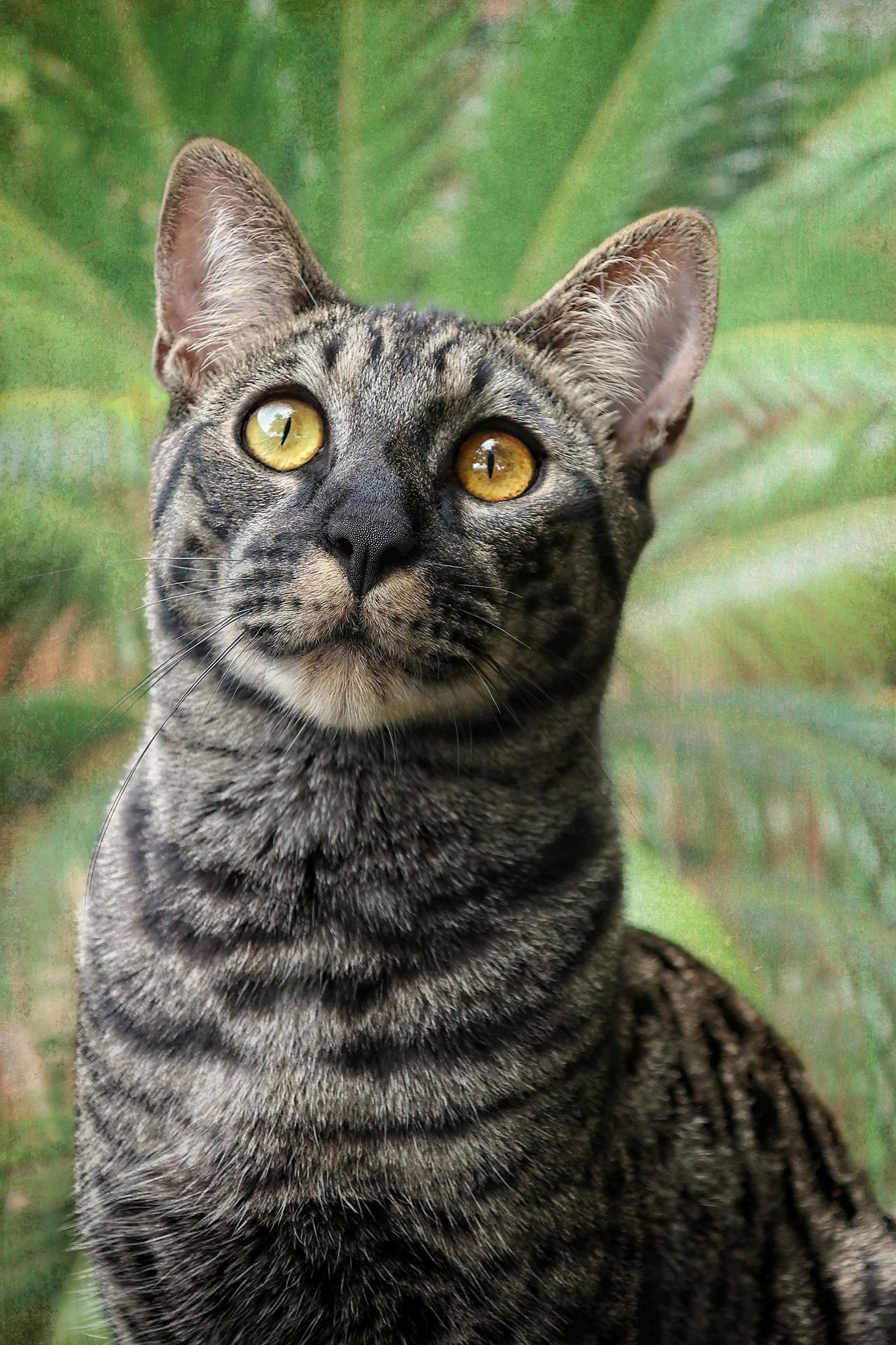
























Patrick



How'd you come up with your cattery name of "Fig Tree Felines"?
Besides Savannahs, I have an interest in growing fruit trees! One of my favorites is the fig tree My sister Cappy suggested "Fig Tree Felines" because she saw how I posted pictures of my figs and how I nurtured them like my cats. I live in the Philippines, and Mediterranean figs are challenging to grow. Every fruit is quite precious if you're lucky enough to get one. I liked the different sounds of the name, so that became my new cattery name.
Please tell us about yourself, your background, family, and occupation?
I live in the Philippines with my daughter Colleen, who's seven years old I grew up in a family of five kids, the second oldest My Dad was a heart surgeon, and my mother was a housewife I have always loved animals As a kid, I had chickens and ducks, and we always had a family cat and dog I was fascinated with wild animals and daydreamed of being a zookeeper and an actor
Now, at 58 years old, I have an online business running pet-related websites, hosting and maintaining several cattery sites, and BengalBreed com Most importantly, I own and maintain SavannahCat com, the first website where people can learn about the Savannah Cat breed. I started this site over 25 years ago.
I started with Savannahs in the early 1990s after visiting a lady in Tarzana, CA, Jan Giacinto, a breeder of Bengal cats. While at her home, I caught a glimpse of her Serval cat. I'd never before seen a cat like this. It was huge in comparison to Bengal cats. I asked Jan if anyone had ever created a hybrid of a cat like the Serval, and she said she'd heard of someone--but they weren't worth anything--and brought my attention back to her Bengals. But it was too late. I'd already figured out how a Serval/domestic cross would become the next cat breed.
I tracked down the two women involved in this rare Serval/domestic cross, Suzie Mustacio of Alabama and Judee Frank of Pennsylvania Both women thought the cross was exciting but needed to discover the worthiness of becoming a new breed My background wasn't with cats--other than reading about domestic, wild, and hybrid cats at the library I was obsessed and read everything I could get my hands on, but I needed to be an expert I was sure this breed (which Suzie Mustacio had already coined as the "Savannah") would be a big hit Suzie had come to own "Savannah," the F1 Judee Frank had bred, as Judy wasn't interested in pursuing the Serval/domestic cross

At first, not many people believed in it, but Suzie Mustacio did. She bred her F1, Savannah, to a Turkish Angora, Albert. They had some kittens, but all died young for unknown reasons. One female survived, an F2 named Kitty, which Suzie gave to me. This wasn't much to start a whole breed with, so from there, I set out looking for other cat breeders who wanted to join me in the Savannah breed
What's the best part about
The best part of breeding cats is the kittens. The second best part is calling up your really close cat friends, getting all the news about what’s going on in their lives with the breed, and exchanging ideas.
Do you recommend people try breeding Savannahs? Why/Why not?
There are so many breeders! I recommend that people enjoy their Savannah pets and leave the hard work and expense to the breed. It's challenging to break even financially for a new (and most) Savannah breeder, and it's tough to establish a name for themselves. It takes years and years to accomplish both of these things.
' ve received
It's hard to say because everything I know is from other breeders The best advice for all cat owners is to keep up with their cats' vaccinations and be very careful when introducing a new cat to their home or cattery. FIP, Feline Leukemia, and other viruses are real and devastating. I can't stress how important it is to keep your cats protected from them.
What's the biggest strength of the Savannah breed?
If a person or family is looking for a cat who loves to interact with them, with cat toys, and go on trips with them or a leash, this is the cat for you. The Savannah is a very healthy breed, and if fed the proper diet, it will live a long and active life.
the most important thing a breeder does?
The most important thing a breeder does is be a spokesman for the breed. The Savannah breed attracts curiosity, so be prepared to answer any questions
Do you feed your Savannahs a raw diet and do you recommend raw feeding?
I feed raw and my favorite kibble, a local one called "Special Cat" (a reasonably new premium dry cat food manufactured exclusively for the Philippine market), which uses rabbit and minimal additives We have access to many farm-raised quail where I live, and the cats lovIt'sem. It's close to the size and makeup of an animal a cat their size would hunt in the wild, and my cats love them
Do you own a Serval? What generations do you breed and how many litters per year on average?
I have servals, but they are getting old and are no longer used in my breeding program. I currently breed F5 SBT kittens. I usually have one or two litters per year
Do you have a favorite Savannah Cat website?
Yes! SavannahCat com We just added videos on the first page, and of course, there are many breeders from all over the world to visit and correspond with.


Do you or have you bred any other type of cat or animal?
Besides Savannahs, I've bred some other species of animals, including chickens, pigeons, rabbits, and dairy goats

What else would you like the Savannah world to know about you and your cattery?
It’s really a good time for people looking for a pet Savannah Please take your time and research the breed and the breeders you're interested in purchasing a cat from You're choosing a cat that'll be with you for 18 years approximately, so it's a big commitment
I wish this new magazine well, and I look forward to watching it grow, evolve, and find its niche in this marvelous breed I've been with so long

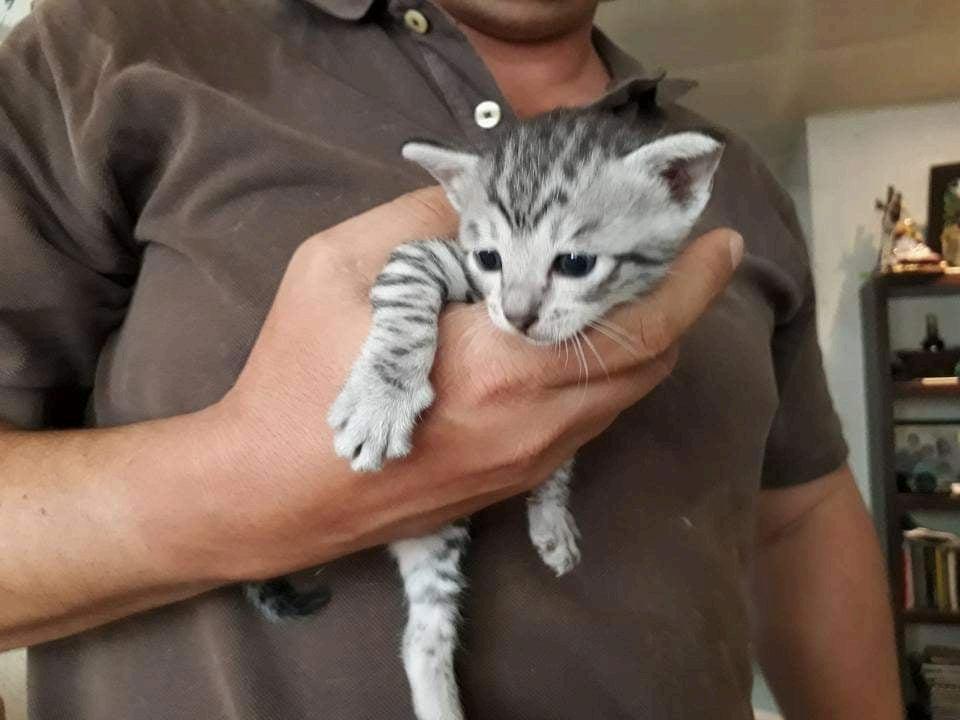




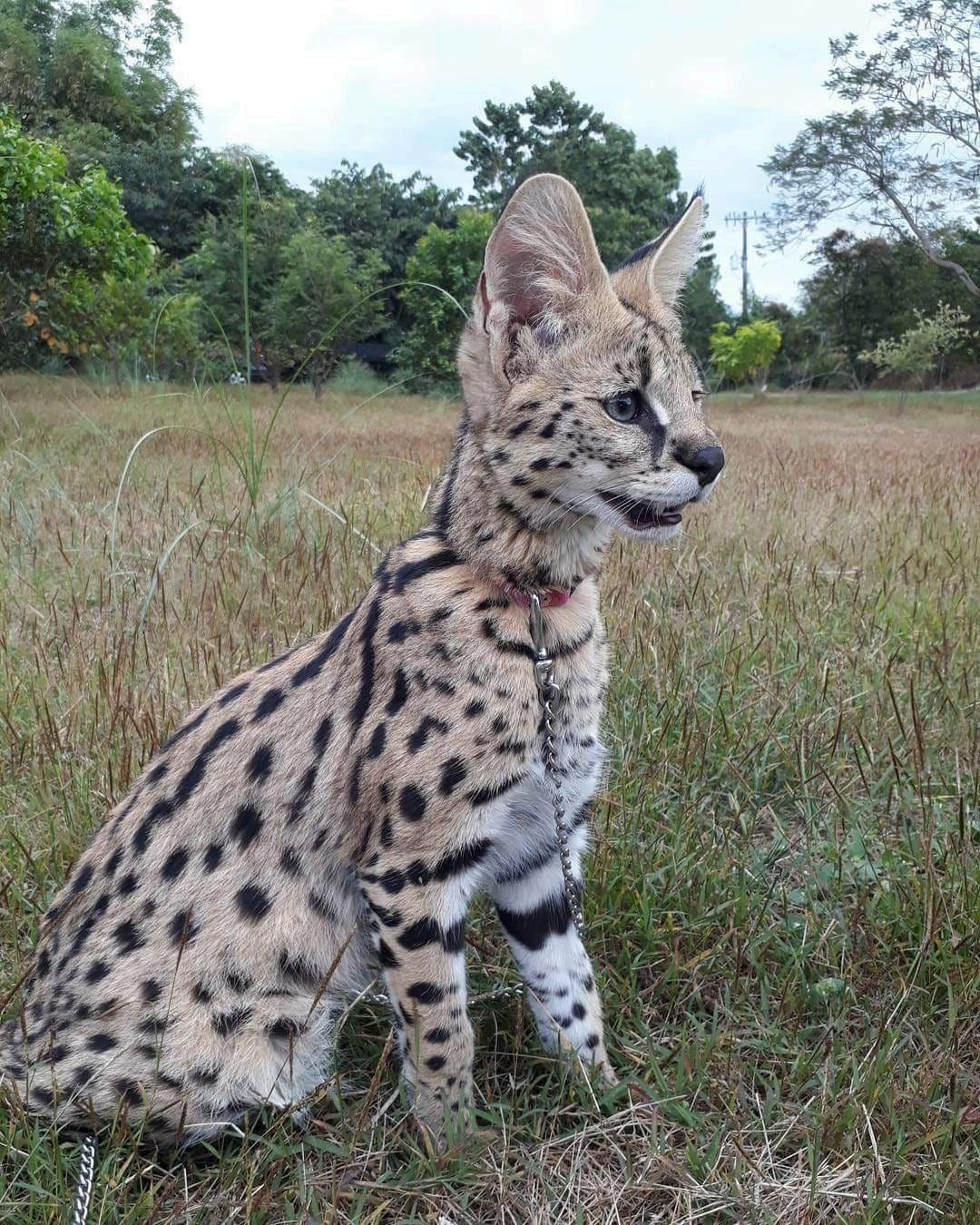






MynameisMariaHarrison.Iamthedesignerandseamstressoftheoriginalcatjacket/harness,andIhaveawealthof knowledgeaboutmyjacketsandcats.Iworkalongsidemyhusband,Dale,withabitofhelpfromourdaughter,Jorgia We'refromYorkshire,livingintheScottishHighlands

WelivedinYorkshire,hadholidaysinScotland,anddreamedoflivinghereoneday.Afteranadventureinourmotorhome tovisittheHighlands,wefellinlovewiththeareaanddecidedtomakeourdreamscometrue.InJuly2019,afterselling ourhomeinYorkshire,wemadethe8½hourjourneywithallouranimalstostartournewlifehere.We'reaformidable teamandworkveryhardtogether.
We'reproudownersofaBengal,Otis,andaMaineCoon,Barney,alongwithfourdogstoo!Twelveyearsago,whenwe broughtOtishomeforthefirsttime,werealizedthemanyharnessesonthemarketweren'tsecureand,therefore,notfeline escape-proof.Ourcatswerequicklyescapingfromthembysimply'reversing'outofthem.Webegandevelopingourjacket designusingourexperiencesandresearch.Overtheyears,ourdesignsevolvedusingopinionsandfeedbackfromcat breedersandotherowners
Wemakethejacketstomeasure(bespoke)tosuityourcat'smeasurementsandrequirementsandusequalityfabrics.They fastensecurelyaroundtheneckandchestwithlongstripsofVelcro®.Alljacketsarereversiblewithblackcottonoranother choicethecustomercanspecifyinthenotesectionoftheorder
Thejacketsarehighlydurable,triple-sewnforstrength,hardwearing,andmachinewashable.They'reeasyandquicktoput onandadjusttoyourcat.Theyhaveasecure,weldedsteelD-ringwithextrareinforcedstitchingtoattachyourleadfor walkingBesuretocheckoutourwebpageaboutLeadTrainingandourvideoexplaininghowtoputonthejacket
ThejacketsareNOTdesignedtoleavethecatoutsideunattended,attachedtoanobject.Althoughwecan'tguaranteethe jacketsareescape-proof,we'veworkedtogetthemascloseaspossible.Ensuringacorrectfitandcompletingthetraining beforeembarkingoutsideiscrucial
Ourdesignfulfillsthesixmainaimsforsuccess:
Ourstoryandbeginningstartedin2003whenwemovedintoourfirsthomeinYorkshire.Thehousewascalled‘Mynwood’ andnamedafteritspreviousowner,MinnieWoodhouse.WediscoveredaftermovinginthatMinniewasalovelyelderly






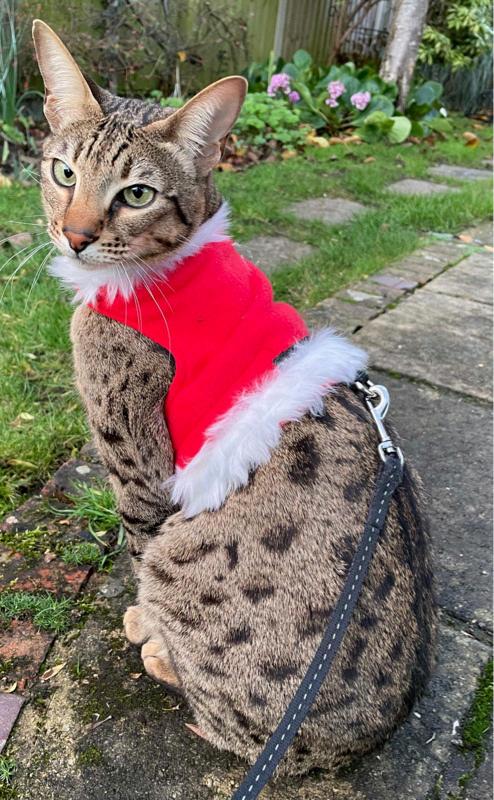
We have F5, F6, and F7 kittens available! Please check out our website! Our kittens come with up-to-date vaccinations, vetted, health tested, microchipped, and a one-year health guarantee
Clawson's Ranch is a small, family-run program located in northeastern Nevada. We're dedicated to producing high-quality, healthy, and strong Savannah kittens All our cats are registered, and PRA and PK N/N Our cattery's registered with TICA as ClawsonSavannah Our dedication is to the well-being and happiness of the kittens we produce. We take pride in our socialization program to improve outgoing type kittens. We support those who enjoy outdoor exploration with their cats, including hiking and camping

We only place kittens in homes that will provide the utmost care and love for their entire lives We require approval with our pre-adoption questionnaire before placing a reservation




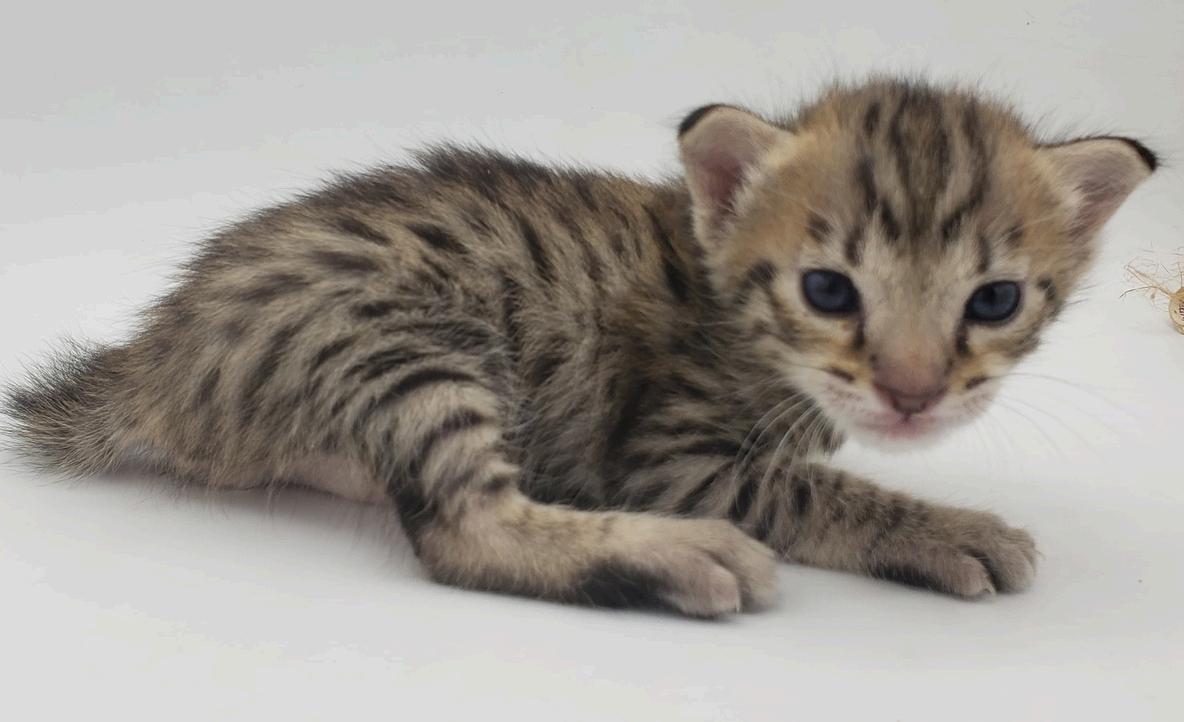

As these candles are inspired by my passion for my feline companions and fosters, a portion of all proceeds is donated to felines in need in Ohio at Columbus Cares For Cats You'll even receive a note regarding the feline the funding went to!
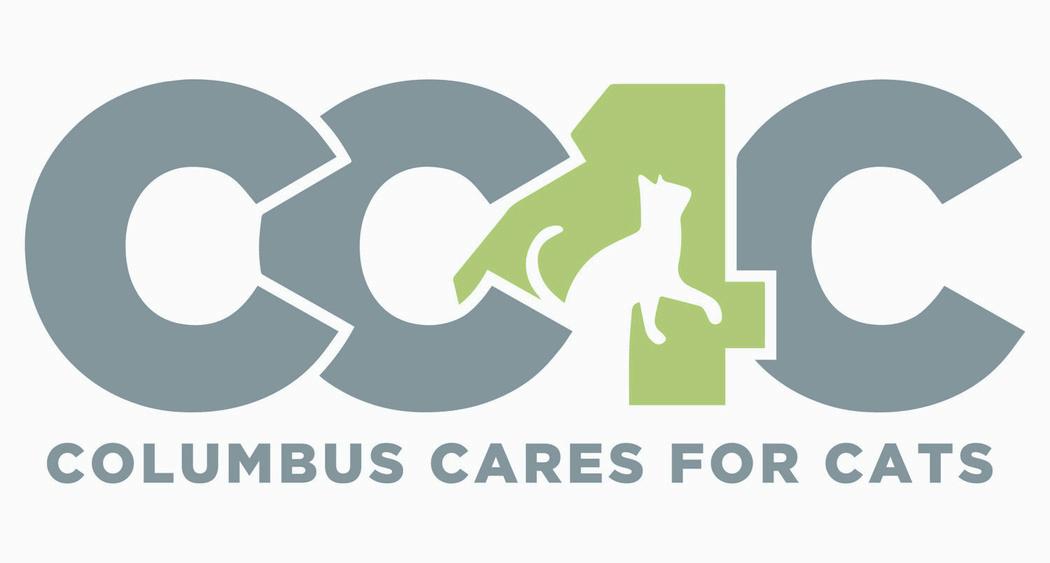
Our Wax: Made with high quality, all-natural 100% soy wax that is bio-degradable, eco-friendly, and sustainable Free of paraffin, petroleum, beeswax products, and dyes Our Scents: Created by blending therapeutic, non-diluted essential oils (diluted oils typically contain toxic chemicals) We do NOT mix any fragrances as these can be toxic to both humans and companion animals. Our Wax Melts come in biodegradable, compostable, unbleached sachets.
*Please note: Any animal may have a different reaction to certain essential oils, so always burn candles in a space where your companions can leave (or enter!) the room depending on how it may be affecting them the time.

ORDER YOUR CANDLES HERE: https://tidd ly/3ojf4Jf
Cedarwood: Offers a soothing effect to reduce stress and has sedative qualities that can help promote sleep
Lemongrass: Anti-inflammatory properties and can promotes awareness
Rosemary: Opens up cognitive function (great for training your cat) It can assist with depression, mental fatigue, and forgetfulness as it can stimulate memory
Frankincense: Eases mental and emotional distress, minimizes distractions, and improves concentration; encourages tranquility and confidence.



Written by: Jamison Roberts, Savannah owner
It'sacommontropethatcatshatewater,yetjustlikeeveryotherlivingbeing,theyneedittosurvive.Whilecatsona wetdietgetalargepercentageoftheirhydrationneedsfromtheirfood,theystillrequirefreshwater.
Theneedsofthosewhoprovidethewaterneedtobeconsidered,primarilyeaseofuseandeaseofmaintenance.You neverwanttofindyourselfinasituationwherecleaningthewaterbowlissomuchworkthatyousay,"I'lldoit tomorrow!"
Ifnotmostpeople,manysitoutasimplebowl,putsomewaterinit,andtopitoffasneeded.That'sonewaytogo,but ifyouhaveplayfulorornerycats,youmightfindthebowlisoftenempty,upsidedown,orfilledwithfilthlikecathair andlitter.
Theanswerseemssimple:Getoneofthosewater-recirculatingbowls.Thewaterwilllastalongtimeandstayfresher, right?Notsofast.
Whataboutthestabilityofthebowlsoornerycatscan'tknockitover?
Howaboutanenclosedreservoirsostrayhair,dirt,andcatlitterdonotfoulthesystem?
Anotherconsiderationisarecirculationsystemthatminimizesthewater'ssurfacearea,therebypreventingthewater bowlfrombeinganairpurifierthatpullsdustoutoftheairasitruns
Finally,thebowliseasytocleanandmaintain.Thispointwasn'tobvioustomeatfirst,butaftermonthsofuse,Igrew todreadtheweeklycleaningofthewaterbowl
The best way to answer the question “What makes a bad cat water bowl?” is to examine several bowls we've used and experienced their shortcomings. We'll take a close look at three examples currently in our possession.



Example 1 – Typical recirculating water bowl with small reservoir and open bowl

This is a fairly standard recirculating water bowl. It features a small reservoir on top, which allows water to be gravityfed when needed, a fountain nozzle about three inches above the bowl, a small filter housing between the open bowl and the pump house, and finally, the bowl where the water resides
The primary issue with this design is the open water bowl and the location of the filter The filter merely protects the pump from debris; it serves no purpose in cleaning the cats' water! If a cat sticks their paws into the water, whatever is on its feet now floats around in the bowl This is typically cat litter and cat hair
As the water level goes down, the small reservoir on top will drain into the pump house and be circulated back into the dirty water Another issue with such a large area of open water is that the air we breathe is dirty as well, and open water will collect that dust out of the air, further gumming up the works
This situation isn't ideal for the cats when it comes to drinking and is not ideal for cleaning either. The bowl will eventually develop slime in the bottom and on the filter unless you clean it every other day.
The small reservoir isn't much help, as it's just a fraction of the overall water volume. In fact, our cats used it as something to knock off when they were in a playful mood.
Another minor issue is with recirculating bowls featuring a nozzle that's some distance above the water, and that's because they are noisier Some people don't mind the sound of trickling water; however, I'm not one of those people!


This recirculating bowl has a much simpler design and features only two stamped stainless steel pieces. It has an open water bowl design, and the fountain nozzle discharges along with the cover plate, which reduces the sound of trickling water
As with the prior example, the biggest issue is the open water bowl, which causes the same cleanliness issues as explained in example 1
In addition to that, although less evident from the picture, an equally big issue is the stability of the bowl Perhaps for aesthetic reasons, the bowl's base is quite a bit smaller in diameter compared to the top of the bowl This gives cats ample leverage to push down on one edge and spill the contents of their bowl all over your floor! I would quantify that as definitely not a good thing!
I like the simplicity of the design, with a half cover that merely sits on the bowl. There are no sharp corners to make cleaning difficult. However, the risk of spilling and constantly dirty water makes this a no-go for me.
The lack of an extra water reservoir isn't a big deal, as my experience has shown that recirculating bowls usually need to be cleaned before they're entirely out of water.

Example 3 – Overly complex recirculating water bowl

This recirculating water bowl features a larger capacity than the previous two bowls It has a big open bowl, an equally sized extra reservoir, and a third water-holding area in the filter house
As with the previous two bowls, this water bowl has all the same issues due to its open water bowl design, as well as some unique issues. The biggest issues of this bowl are the overly complex design and large capacity.
With a capacity as large as this, it's tempting to let the bowl “do its thing” for a week or even ten days at a time. However, this causes the bowl to get extremely dirty and slimy. That's when the bowl's complexity becomes a problem; it's a real pain to clean!
The bowl breaks down into four main parts and a couple of smaller parts.


Two parts are missing from this picture One part is the charcoal filter, which slots into the filter housing, and a small plastic screen that sits in the slots between the pump house reservoir and the open bowl The latter part was small enough that it fell into the garbage disposal when cleaning the bowl, only to be noticed when the disposal later made a terrible grinding noise, thus destroying the screen!
Let's start with the closed reservoir It sounds like a great idea to have a bunch of clean water ready to be gravity-fed as needed into the bowl, and in fact, that's essentially why we bought this bowl initially However, as I've touched on before, this leads to less frequent bowl cleanings, making it harder to clean when you have to.
And with the closed reservoir, that's terrible as the reservoir's opening is only about three inches in diameter. That means most adults can't stick their hands into the container to clean it, and dishwashers are of limited use. That leaves filling it with hot water and shaking it to clean it. That's not the end of the world, but not exactly the best way to clean things and a general pain in the butt to deal with.
The filter housing is just as challenging to clean but with the added issues of some very sharp and tight corners in the design process There must be a better way to get into every corner, crack, or crevice of this thing No, look how over-designed it is!

3 – Overly complex recirculating water bowl
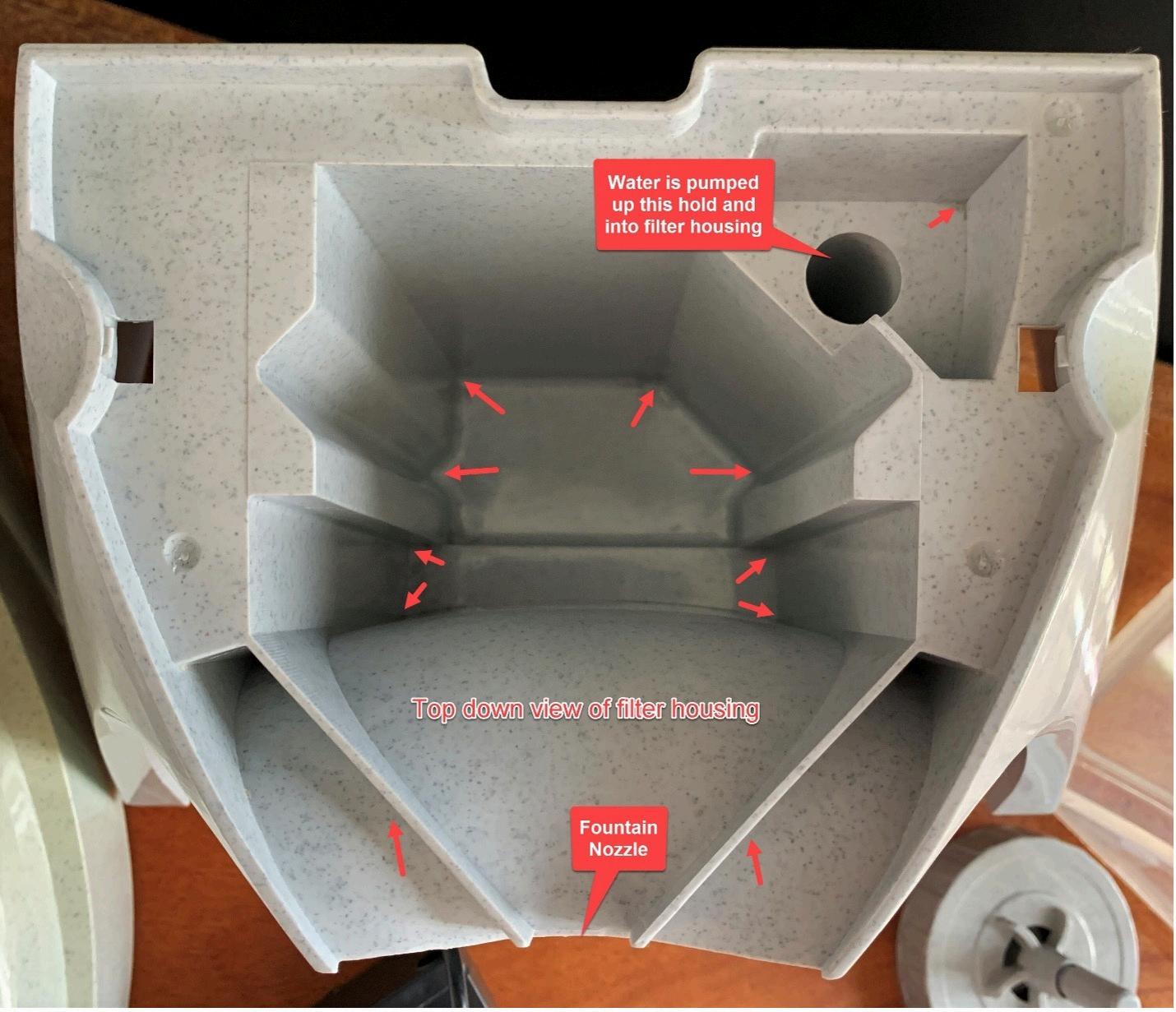
Good luck getting the slime out of all the corners and angles of the filter housing!
The final issue with this particular design is that the filter housing can be displaced from the bowl without too much pressure. One of our cats was obsessed with taking the lid off the housing and pulling the filter out, and he often dislodged the filter housing, causing a mess of water and the bowl to stop functioning.
So far, I've spent many words explaining all the ways a water bowl can be bad now; let's discover a good water bowl!


And here it is, the Eversweet Solo recirculating water bowl It features the best design for keeping water clean, the most straightforward design for maintenance, and is as cat-proof as a bowl
The first thing to point out is the closed water bowl system and reservoir Almost all the water is inside the container, away from dust, debris, and curious cat paws. The fountainhead is just above the waterline, meaning minimal trickling noise.
The bowl comprises three simple pieces, all featuring soft curves and no tight spots. It is straightforward for adult hands to get into all pieces and clean them very quickly.
The best part of this bowl is the filter placement and how it fits into the recirculating process


1 The water is pumped up the center via the green arrow
2. A slight depression collects water, and the overflow goes down the slots, as indicated by the red arrow.
3. The water flows through the filter before entering the reservoir again, ready to be pumped out.
The third point is so important. Water is constantly recirculated through the filter before being pumped. There's no large bowl for debris to collect in!
You can see all the bowl pieces in the final picture, with the filter being the white circle in the bottom right.

In closing, this bowl is easy to clean, quiet, hard to knock over due to its low center of gravity, and has just the suitable capacity, so you don't have to fill it every day But it also won't last for ten days, tempting you to let it ride and get extra filthy! All in all, we've not had any slime build-up, and cleaning this bowl takes less than two minutes, whereas the complex bowl I talked about takes 15 minutes to clean--and will still only be partially clean!

Purchase Your EVERSWEET SOLO Fountain Using This Link, and the 4% Commission Will Be Donated to "Savannah Cat Rescue and the Savannah Cat Care Fund "
Click Here to Purchase


by: Laura Root, Savannah Owner

So, Your Cat Wants a Window Shelf?

Almost all cats love sitting in the window, looking at the birds, and getting some sunshine. However, in many of today's homes, windowsills are small to nonexistent, at 3 5 inches Some of our cats can barely fit a single paw on that expanse
When I began considering building a window shelf for my cats, the biggest consideration (literally) was Ascher, the F2 I determined the shelf's dimensions based on that aspect, plus the window I wanted to install it in To help you with this part of the planning, I'll walk through the questions I must answer before putting a pencil to paper for the plan
First, think about the obstacles in the window- latch, security, etc Consider the windowsill depth to determine the depth of the support corbels vs the overall depth of the shelf itself Then, consider your chosen window and your cat's size and decide your shelf's maximum length Use a stud finder to locate any wall studs into which you can attach the support corbels It's best to have at least one screw sunk into a wall stud for sturdiness You can also use screw holders if necessary There's usually a horizontal "footer" stud along the bottom of the window, and your top anchor screws can go into this.
For example, I picked an 8' window with 24" sliding windows on each side. So, I had to consider the window hardware and ridges and route a small notch (rabit) to accommodate a portion of the frame in the back of the right side. You'll want to think about what you want for the sides. I decided on 4.5" because of Ascher, but you might get away with 3" sides.
I also wanted this shelf to have a more "furniture" appearance than a bare pet store shelf I chose to rout a decorative edge at the top, but it can be a simple, straight board with the top edges sanded round If you want something more decorative but need access to a router, the home improvement stores have inexpensive wooden crowns and baseboard molding that works well
The support columns are another aspect to consider before designing They can be a simple triangle of wood cut to the correct size, or you can fancy them up with curves and routing
Consider also the type of wood you want to use If you're going to stain it, you'll want a nice-looking board for the sides and corbels (I used solid soft maple) You can save money for the base using good plywood (again, I used ¾" maple plywood) A nice, straight pine board will be sufficient if you want to paint the shelf You can have it any way you wish: stain, paint, size, plain, fancy, etc.!


Once I laid out the measurements necessary in my plan, I started cutting the components To ensure a good fit between the bottom of the shelf and the front/sides, I made a ¾" wide, 3/8" deep rabit on the inside bottom edge of the front/sides. Gluing and pinning will work fine if you don't have a router.
I used the router for the decorative edge I wanted on the top edge of the outside of the front/sides.
Next, I cut the plywood for the base, remembering that the back would fit right up against the window frame and not have a raised back If you put a rabit in the front/sides, cut the width of the base ¾" shorter and cut the depth 3/8" shorter than the eventual outside dimensions to allow for a tight and secure fit
Next, fabricate the support corbels and their backers
Depending on your choices, simple or fancy, the corbels can be shaped with a band saw and sanded smooth, or use a decorative router bit. The backers are just 3-4" wide, and the height you chose for the corbels, plus an inch or two. The corbels are screwed to these backers from the BACK after staining or painting using 1 ½" screws to affix the corbels to the backers.
At this point, you can stain or paint the individual pieces (which is what I like to do) or assemble them and then stain or paint I prefer to stain the individual pieces; that way, you don't have to deal with getting the stain or paint into tight inside corners
Once the paint/stain cures, assembly begins! I mitered the corners of the front and sides to get a nice look; however, if you don't have access to a miter saw, these can be "butt" joints. If so, the front piece should go the entire shelf length, and the sides should be glued flat against the front. Could you make sure to sand smooth? Once glued, I used small pins to secure the joints and pin the base's front and sides.
Once the corbels have been glued and then screwed to the backers, it's time to take your project to the intended window!







After determining where the studs (if any) are below the window sill, mark these with your Frog Tape If there are no studs, space your corbels sufficiently apart to support the shelf (and cat!) I set mine about 4" from the outside edges of the window shelf. Mark these locations on the corresponding corbel backers and drill pilot holes for the anchor screws.
Get out your level! This part's vital as you'll want to ensure your windowsill's bottom and your corbels' top is LEVEL. Also, check to make certain that the corbels themselves are plumb and not cattywampus! (pun intended)
I placed one screw at the top on the outside of each of the actual corbels in each backer I used a two ¼" screw, sunk into the aforementioned window "footer " I then placed another screw (2 ¼" is fine) into the other side (inside) at the bottom of the backer (these went into the screw holder--no stud) Drill the holes to accommodate the plastic screw holders and insert the holders. I found having another pair of hands very helpful with this step unless you are adept at using your knees as balancer/holders. Screw the corbels/backers to the wall.
Set your shelf onto the corbels (DO NOT attach them yet!). From the bottom, mark your base where the corbels line up drill pilot holes in the center of those marks For instance, my shelf is 14" in-depth, the windowsill is 3," and the corbel depth is 9" I set my screw holes back about 5" from the front of the shelf to make sure I did not have a screw come through the bottom of the corbel Now go ahead and put the screws through the bottom (from the TOP) into the corbels Place two more screws through the bottom toward the back of the shelf into the windowsill I used 2 1/4 "screws for these attachments
Place your pet bed or mat into the window shelf and watch out! Your kitties will be racing to see who gets into it first!!!


Circular Saw or Table Saw
Router and Decorative Bits
Miter Saw
Band Saw
Brad pinner if necessary
Small level
Sander/Sandpaper
Clamps
Wood glue
Mounting Screws, including screw holders, screwdriver, drill bit for pilot holes
Frog Tape
Measuring Tape


¾" Plywood rectangle for the base (my outside dimensions for the shelf were 14" deep x 24" wide)
4 ½ "wide board for sides, front or crown/baseboard molding in a sufficient length (front plus two sides, plus some for mitering corners)
¾" Boards for Support Corbels equal to the depth and twice the height (for 2) I started with 8" x9" rectangles
¾" Backers for the Support Corbels- these can be 3-4" wide and the height of your Corbels, plus a couple of inches You can cut these from the board you get for the front and sides if you add 20" or so
Stain or Paint, brushes
Pet bed or mat for softening the bottom of the window shelf


By: Heather Jackson

In a prior "What the F" article, we discussed the Filial system, which you can read here. This article takes it a step further. If the Filial system needs to be more precise, there are even more letters to learn! You can have an SBT-BST cat as well. Wait, what... isn't that a Palindrome? No, it's just a mouthful.
What does SBT Mean? Once a cat's parents, grandparents, and great-grandparents are ALL Savannahs, the result of those kittens is called "Stud Book Traditional" or SBT This is the first generation considered a purebred Savannah and is the only classification for the Championship Competition with TICA The earliest generation of SBTs achieved is F4 (but that doesn't mean ALL F4s are SBTs)
So, what does BST stand for? That's a "Brown (Black) Spotted Tabby " This means any brown-colored Savannah with a black (or dark brown) spotted pattern and a black tail tip is a BST BST is the most common color for Savannahs, and a BST can range anywhere from a very warm-toned golden brown to a darker, cool-toned brown that almost looks gray
Fun Fact: The Savannah Breed Standard permissible colors also include SST silver (Black), Spotted Tabby, Black (aka Melanistic), and Black Smoke. Below are examples of warm BST versus Cool BST.
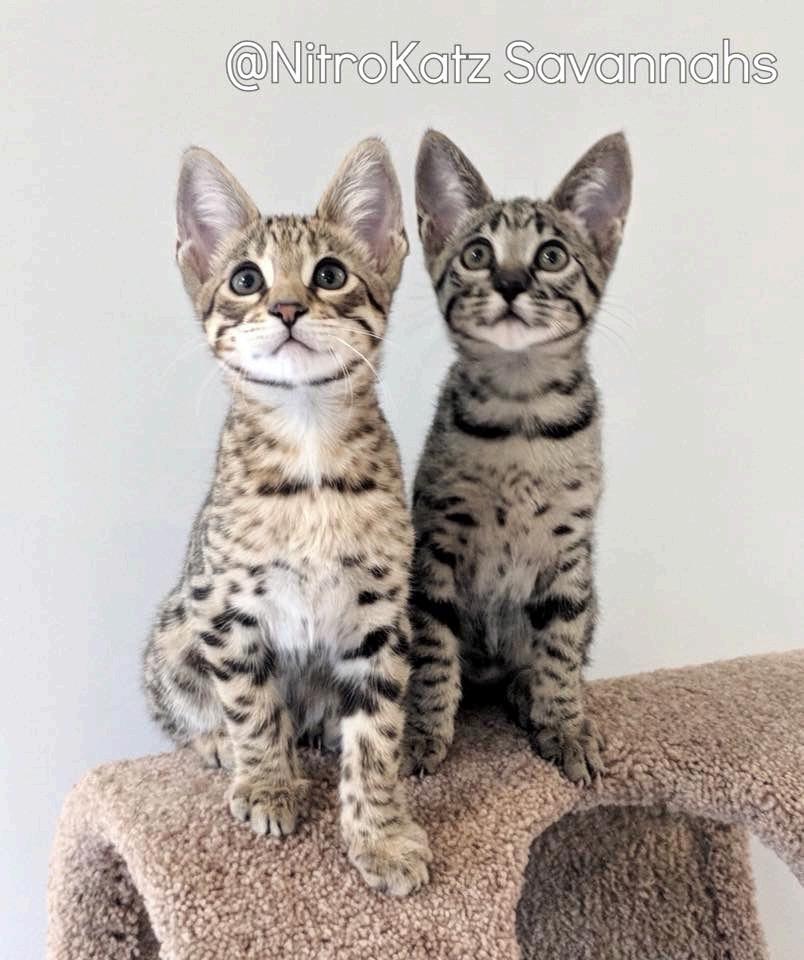
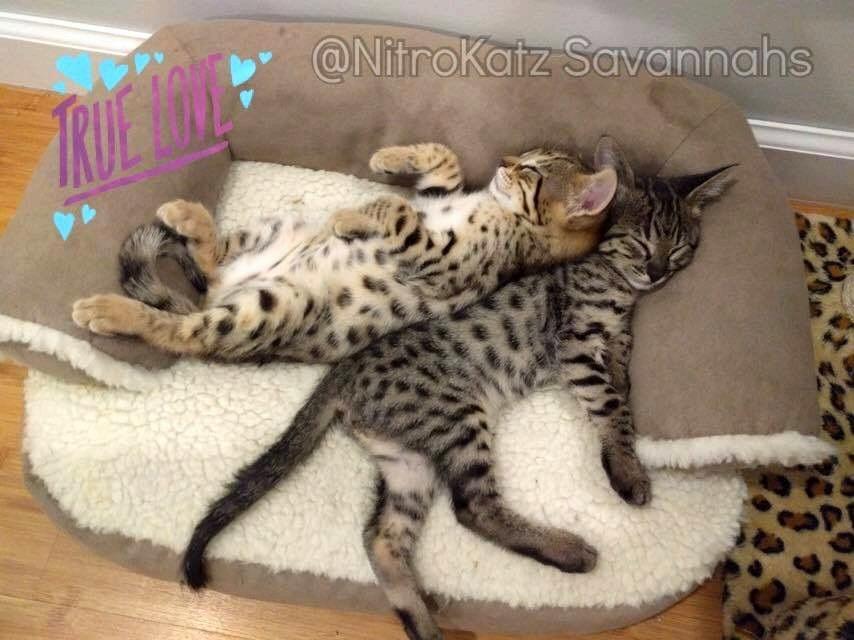
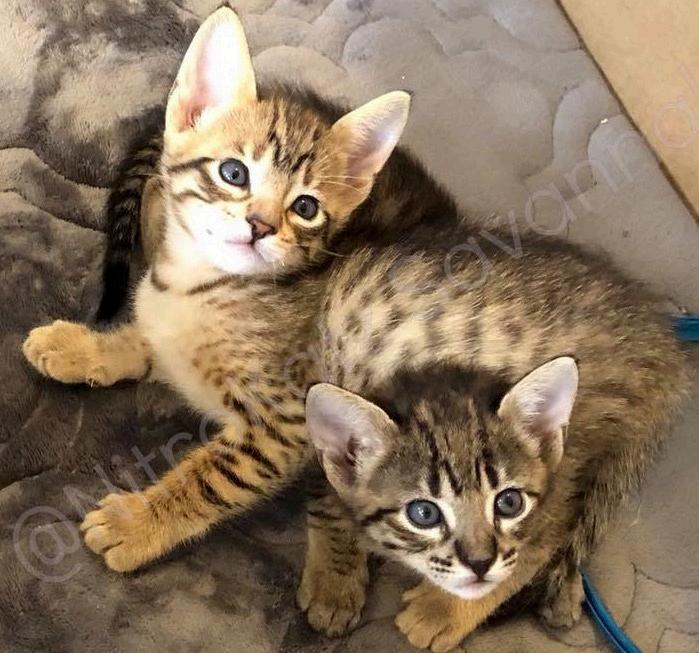

Founded in 2003, Savannah Cat Rescue (SVR) is a volunteer service (not brick and mortar) by Savannah breeders: Kristine Alessio and Brigitte Cowell Moyne with a core group of volunteers across the United States and Canada The mission of SVR is to rescue Savannah Cats and provide education to the public about the Savannah Cat Breed
SVR cats come from various places, the primary being breeders who’ve sold kittens to owners who are unprepared or unable to care for a Savannah The second, the breeder didn't assume responsibility when new owners needed help or decided to return the cat A good breeder will always take back a cat he/she has bred, no matter the age or circumstances. Luckily, most Savannah breeders fall into this “good” category!
When owners first contact the SVR, they prefer to help them work through any problem(s) they may be having. If a resolution is unsuccessful or the owner’s lost the patience or ability to deal with the problem, SCR can take possession of the cat with the owner’s agreement (a legal surrender form)
SVR identifies qualified foster homes and places rescued cats for evaluation until placed into a permanent home SCR will work with foster homes
If necessary, to rehabilitate cats, have them vetted (vaccinated and spayed/neutered), and evaluate any special needs or requirements, SCR gives first preference to foster homes if their homes are a good fit
Although the Savannah breed is young, it's growing fast, and the number of Savannah cats and catteries producing Savannahs is increasing SCR expects to see more Savannah cats in Rescue in the future, but this is NOT a reflection of a breed problem; it is merely a fact of feline life
Available rescued Savannah cats are showcased on the SCR Facebook page or https://groups.io/g/SavannahCatRescue. SCR never knows when a cat will become available in any location. Rescue Savannahs are typically adult cats of varying generations, ages, and genders and are rarely kittens. All Savannahs available for adoption through SCR will be spayed or neutered and come from a foster or the current owner's home
Please check the Hybrid Law site to ensure Savannahs are legal where you live before asking about an available Savannah SCR will NOT adopt to anyone living in an illegal area! Please contact your local Animal Control officer if you need more clarification about your community's legality, homeowners association, city, county, state, or province. Always make suryou'rere in legal compliance with the number of pets you may own. We require landlord permission and proof to own a cat if you rent or lease your home.
Adoption fees for each Rescue Savannah are usually $200, and donations also fund SCR.
Shared with permission from SVR. Please consider donating to the SVR here.

The Savannah Cat Care Fund (SVCCF) was established in 2019 SVCCF is an all-volunteer 501(c)(3) nonprofit organization providing financial assistance throughout the United States to Savannah cat owners who can't afford emergency care for their Savannah SVCCF financial assistance applies to all illnesses and injuries requiring immediate emergency or urgent care
The fund started to prevent Savannah cats from being euthanized or surrendered when owners couldn't pay the veterinary bills This fund has been years in the making, and as our breed grows, so do its needs

The Savannah Cat Rescue team (SCR) felt a need for an organization that could help pet Savannahs BEFORE being surrendered or euthanized A group evolved, and the idea came to fruition with many people's help The SVCCF works with Savannah Cat Rescue to save our precious Savannahs. The SCCF works with the community and anyone needing emergency funds to save or help their Savannah cat.
The goals of the Savannah Cat Care Fund are:
To generate financial support for the organization's initiatives through outreach and fundraising, primarily focusing on providing financial assistance to Savannah pet cat owners experiencing financial hardship due to unanticipated emergency/urgent cat care expenses
To work with Savannah Rescue and help/save Savannah cats BEFORE they are surrendered or euthanized due to an owner's inability to provide emergency veterinary care
To work with veterinarians on accepting pet insurance and allowing owners to pay only deductibles and copays; To provide education and resources to Savannah owners as needed
We define a Savannah cat as (a) a Savannah with TICA registration, (b) a Savannah rescued from SV Rescue with proof of such, or (c) a cat with no registration papers but deemed a Savannah by the SVCCF Board of Directors or their appointees; or, (d) a Savannah recognized and confirmed as such by the cat's breeder






Ask anything Sa"Vannah" cat-related atwww.savannahgans.com and click the "contact" tab in the menu We'll help you get answers to your questions and possibly share them in a future issue!

I have a great Savannah story, DIY project, or product review I'd like to share. How can I get it published here?
Submit your story ideas by visiting our website and clicking on the "contact" tab on the top menu
How often is Savannahgans® e-Magazine published?
Issues are released on the first of each quarter: January, April, July, and October each year.
Is there a subscription fee to read Savannahgans® Magazine?
This is a labor of love from one Savannah lover to all others. However, there are expenses necessary to make this a legitimate and legal publication Part of the proceeds from donations and affiliate income (Amazon, Ferris Cat Wheel, Litter-Robot, etc.) is donated to the Savannah Rescue and Savannah Cat Care Fund.
Are there other ways to read SAVANNAHGANS® coming in the future?
Research is underway to find viable publishing options for paper versions and e-readers. The three 2020 issues may be combined into one and made available for purchase in the coming months as a trial option Stay tuned!

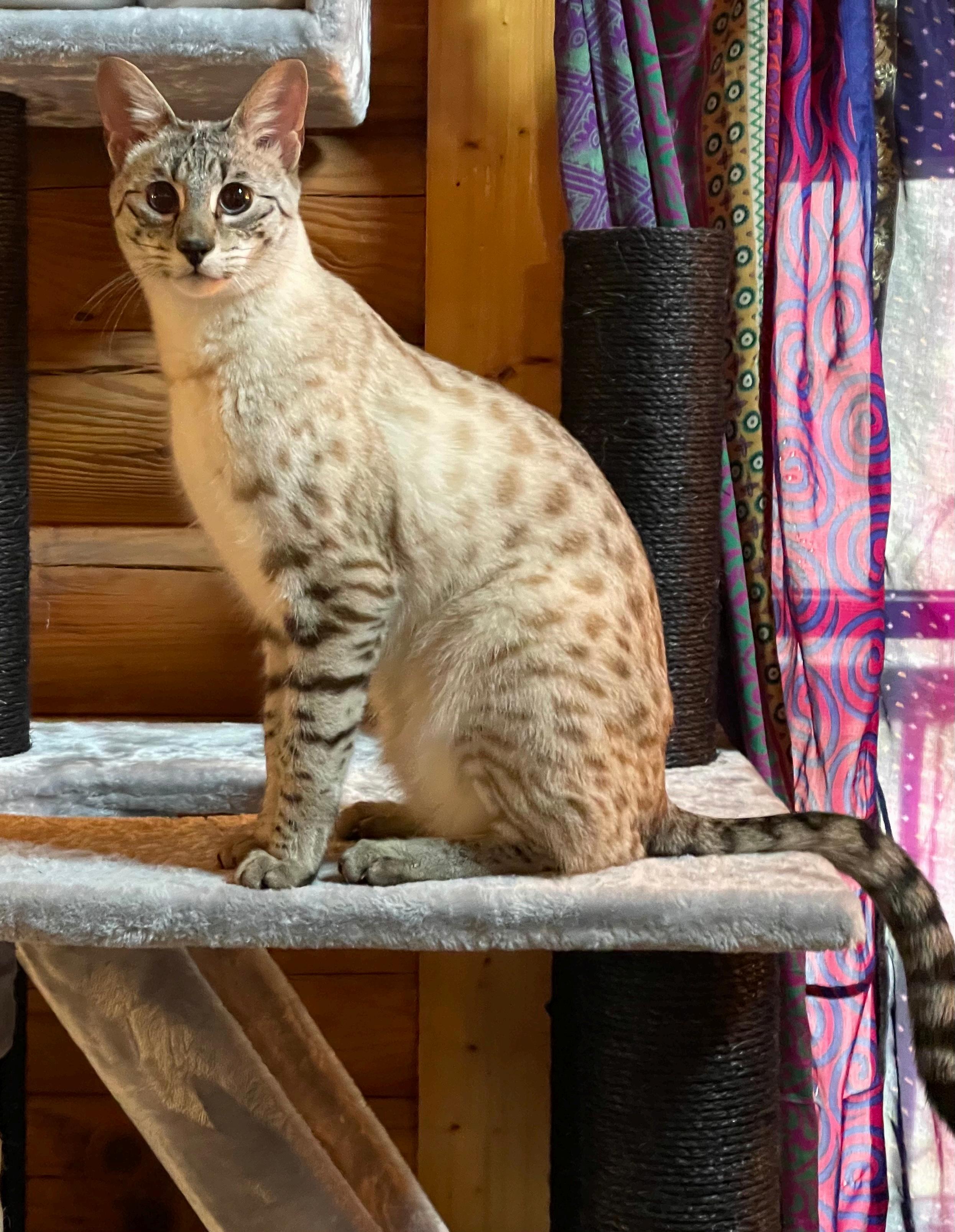

Watch for the Summer issue when we feature everything you ever wanted to know about the African Serval!
